.jpg)
View from Sheep Pasture Summit towards Buxton.
HIGH PEAK RAILWAY WALKS
(Update: June 2017) (Updated June 2018)
SHEEP PASTURE TO MIDDLETON BOTTOM
We now continue over the C&HP track bed towards the Middleton incline that takes us through Black Rock, which is a magnificent wooded and rocky area. Black Rock
is popular with rock climbers and those who simply wish to see the magnificent landscapes from the rocky summit. It is said that you can make out Lincoln cathedral
in the right conditions.
.jpg)
View from Sheep Pasture Summit towards Buxton.
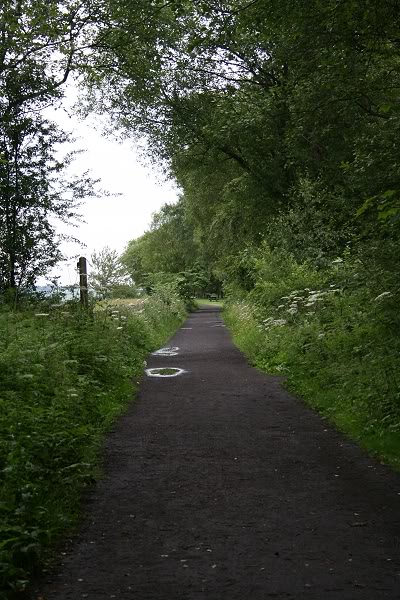
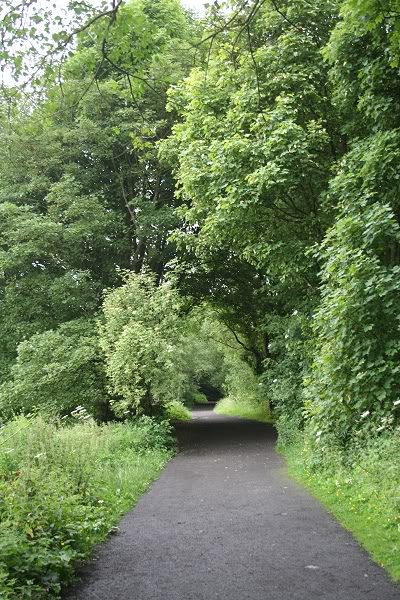
Left: looking back towards Sheep Pasture. Right: Looking towards Middleton
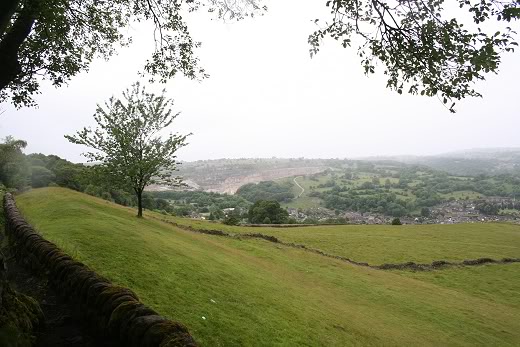
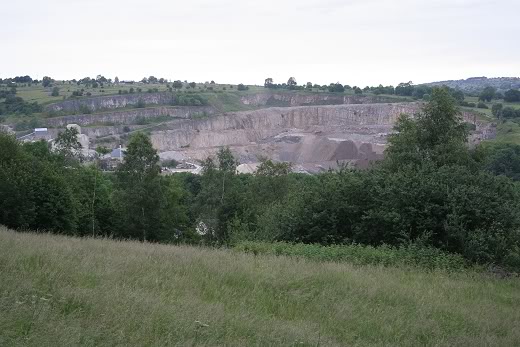
The National Stone Quarry to the east of Cromford comes into view .
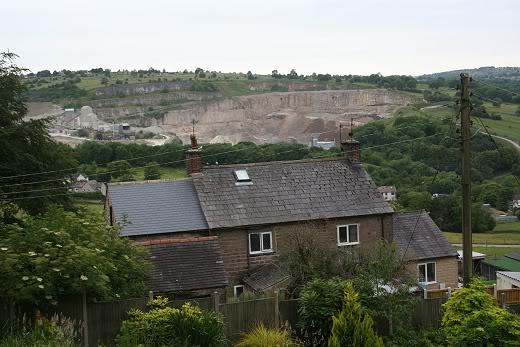
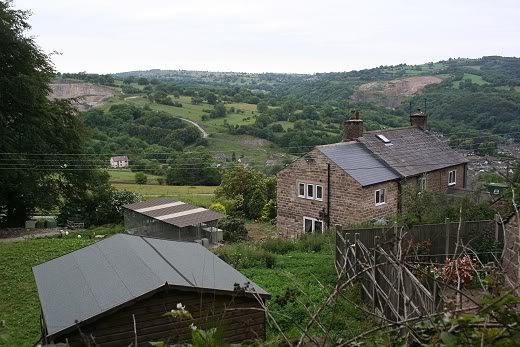
The National Stone quarry seen from a clearing by the track bed between Sheep Pasture and Black Rocks.
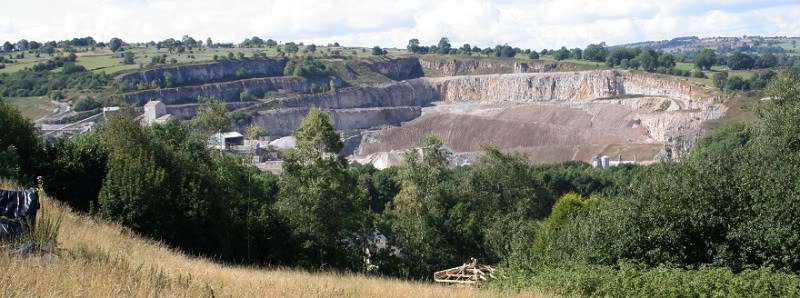
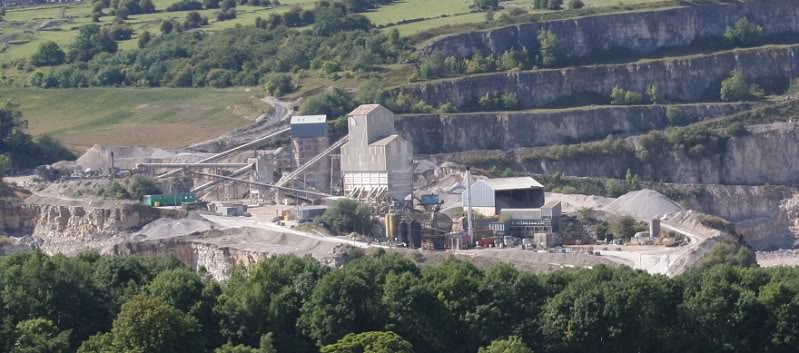
Both: National Quarry, Wirksworth (Aug. 2011).
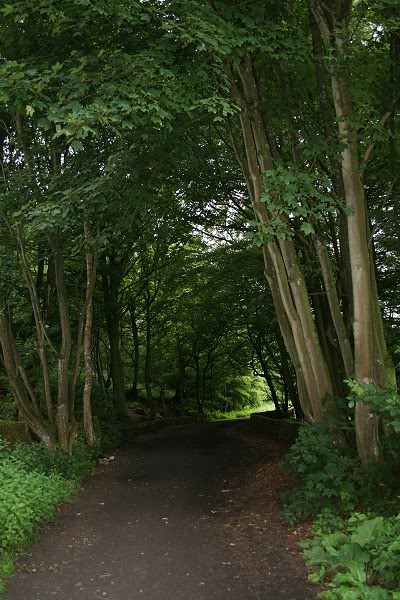
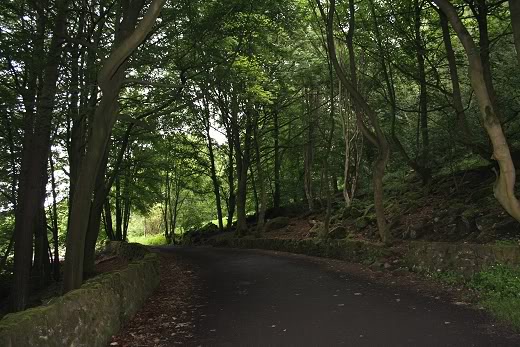
A heavily wooded area where flash had to used to see any detail in the shadows
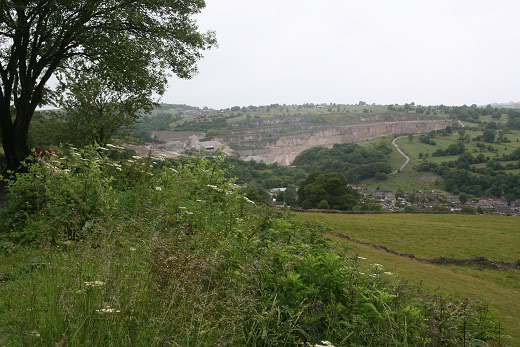
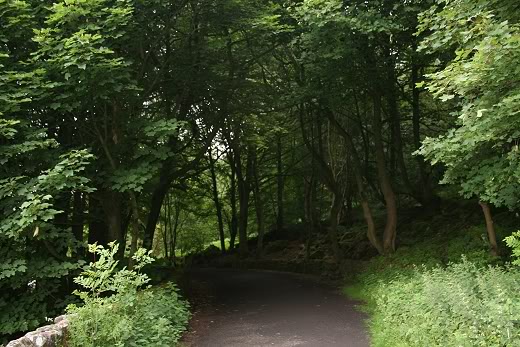
Ex small quarry just to the north of Sheep Pasture Summit. There was a passing loop on the right of the main track.
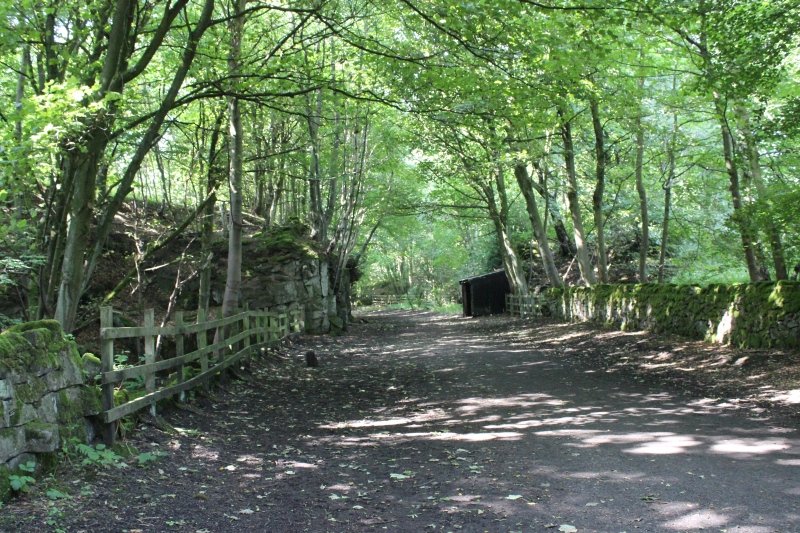
Sit of small quarry loop siding, behind the fence. 28th Aug. 2013.
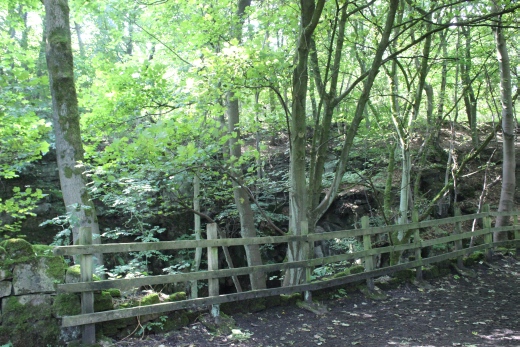
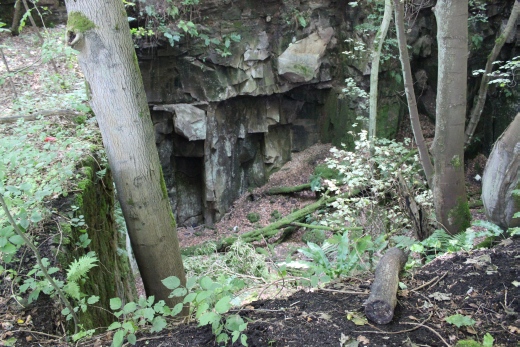
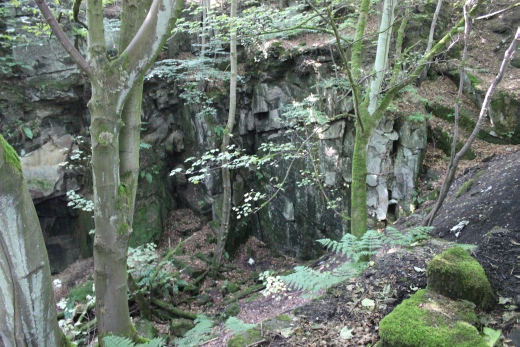
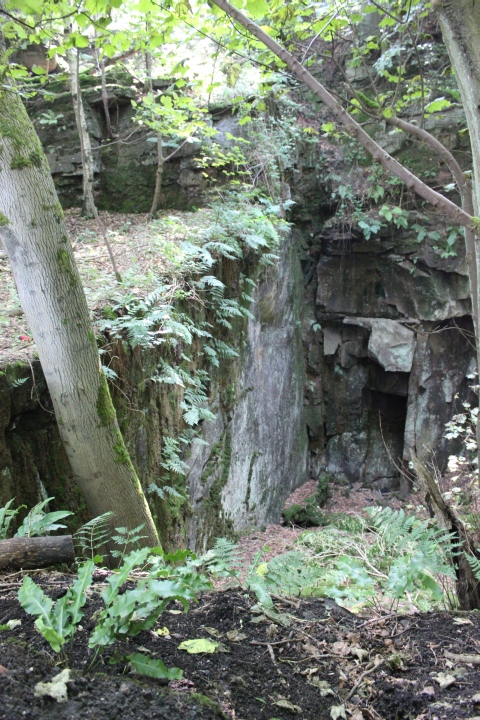
Remains of the quarry. 28th Aug. 2013.
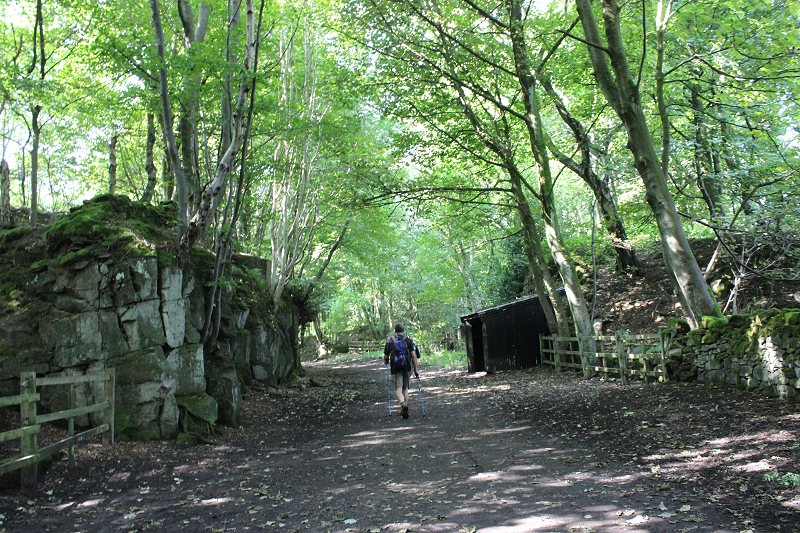
Leaving the small quarry site, towards Black Rocks.
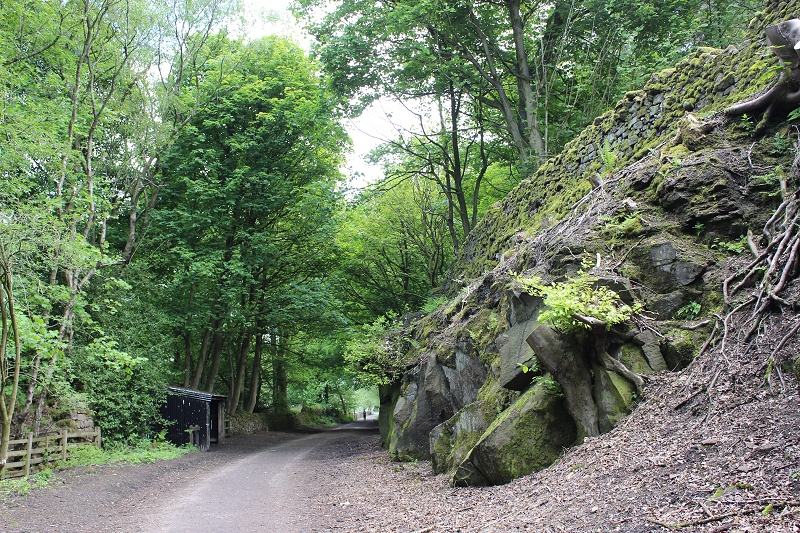
Vic's bike shed. Towards Sheep pasture. (16th May 2016).
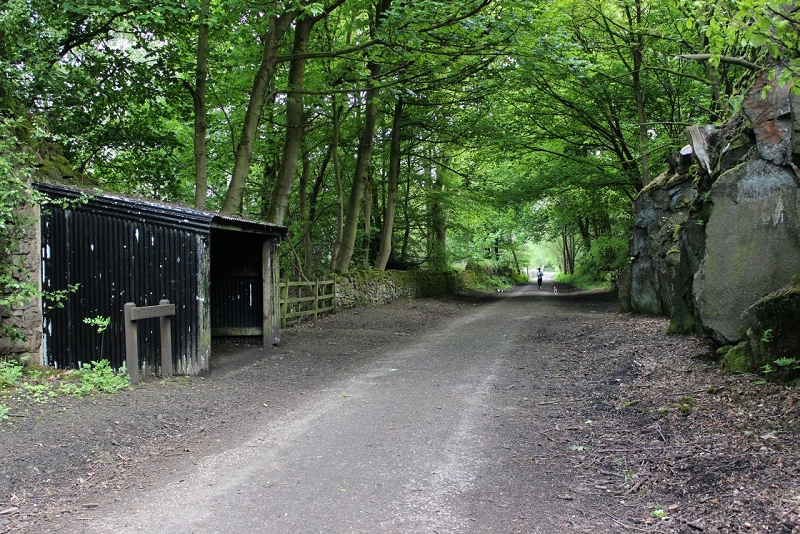
On the straight towards Blackrocks, by Vic Edge's Bike Shed, towards Sheep Pasture. 16th May 2016.
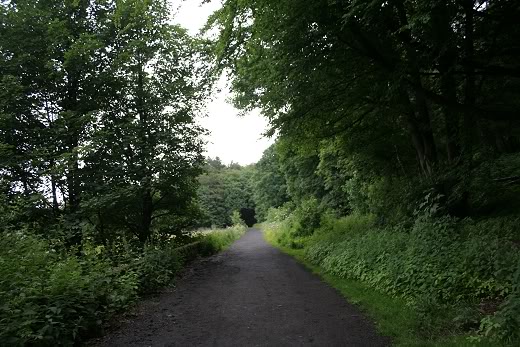
A short open stretch before entering another heavily wooded, and rocky area, where flash was required.
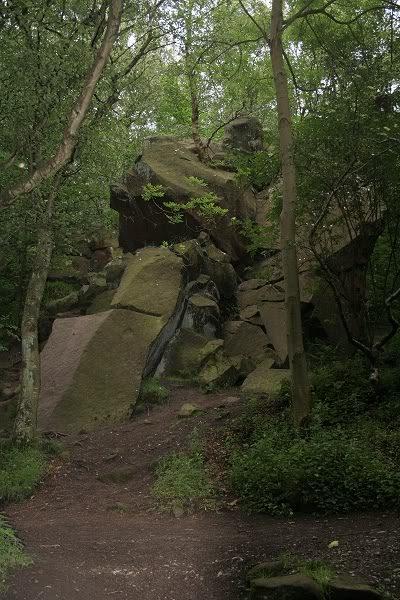
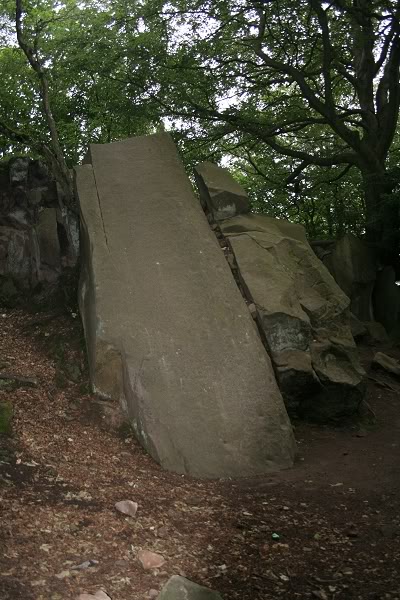
Part of the Black Rock group. In spite of being just after 1pm it was so dark that I had to use flash for these photos.
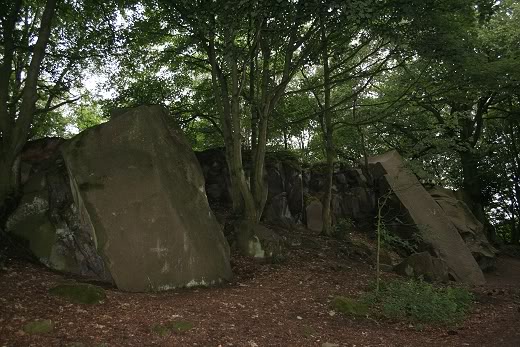
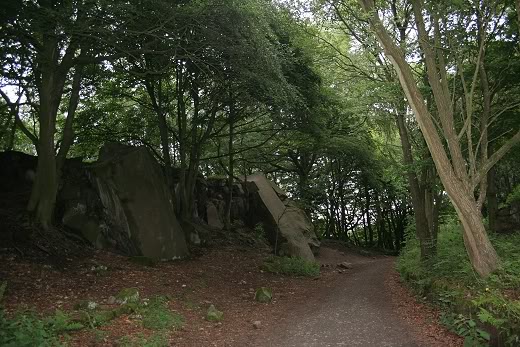
Left: Black Rocks Tourist Center & Shop. Right: Original Ex Railway Level Crossing gates, leading into the car park.
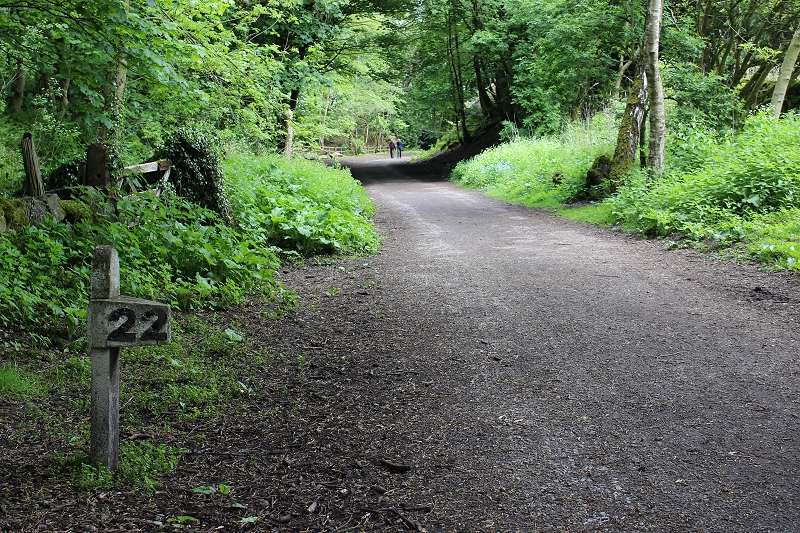
22 mile post. Reverse view from above, right. Towards Sheep Pasture. 16th May 2016.
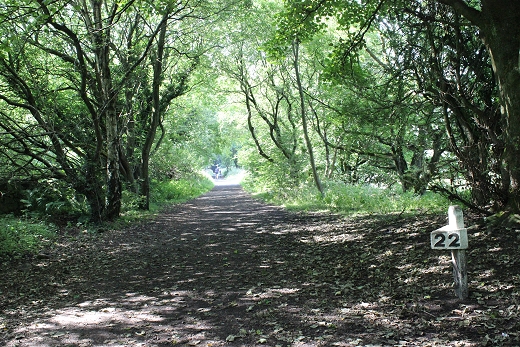
The 22 Mile Post still remains. Towards Middleton Bottom.
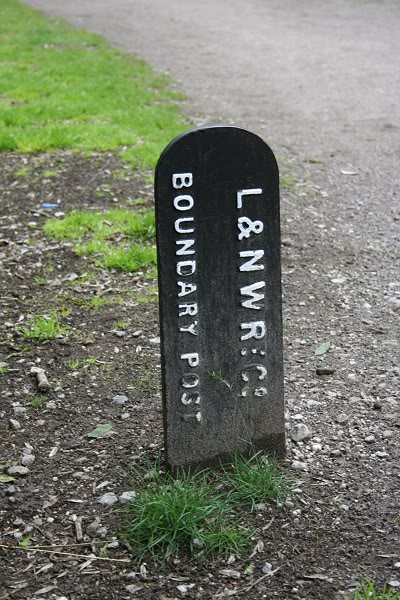
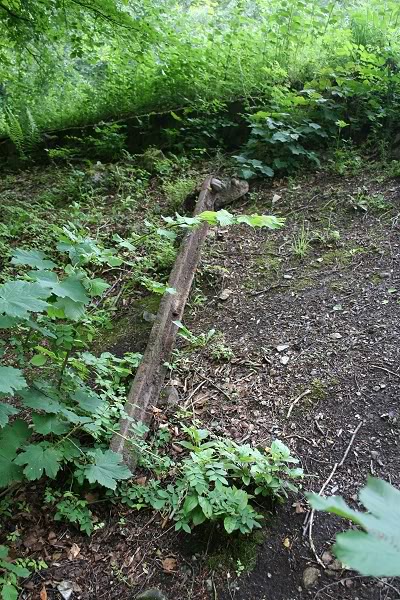
Left: Between Sheep Pasture and Middleton Bottom the railway came under the London North Western Railway (LNWR) northwards..
Right: A rail dumped on the side of the track bed.
BLACK ROCKS & Ex LEAD MINE RUINS
Black Rocks Ex Lead Mine remains. An interesting site. It is nicely maintained and includes a large car park and Tourist Shop, with seated area outside.
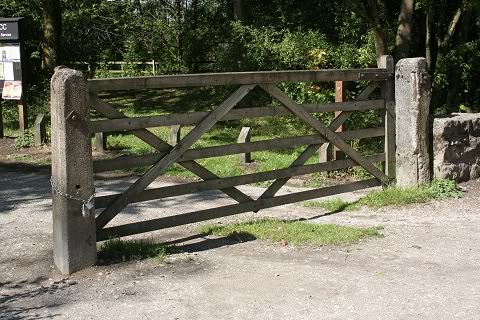
The old crossing gate which was the main entrance to the Lead Mine.
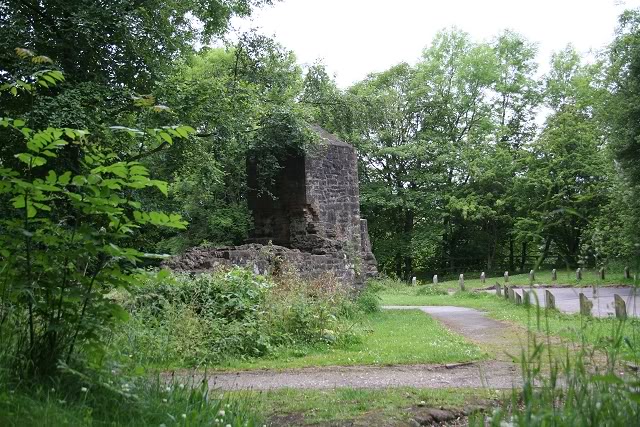
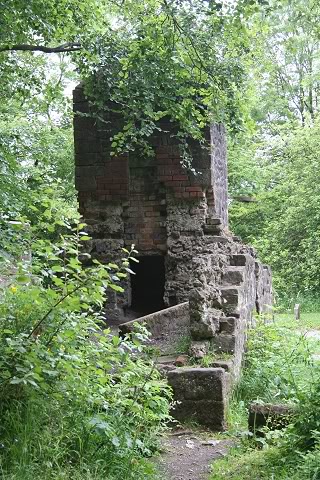
Remains of the lead mine at Black Rock. The Information Office, shop and picnic area is alongside to the left.
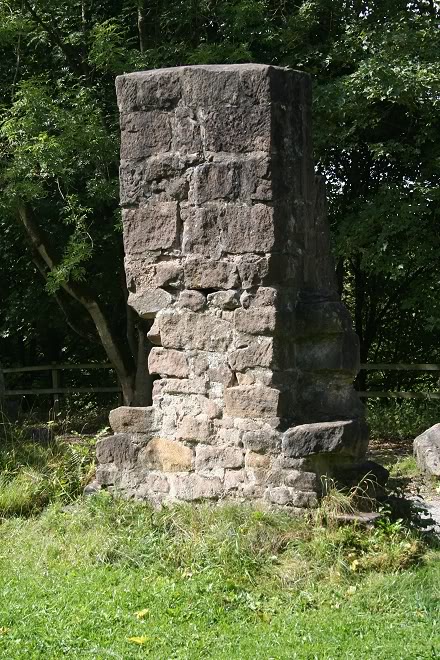
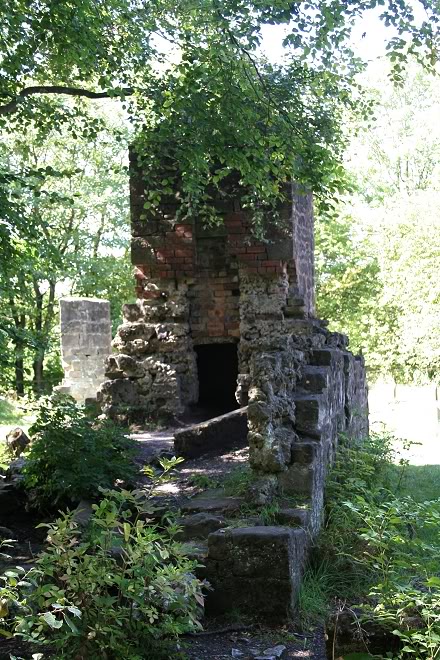
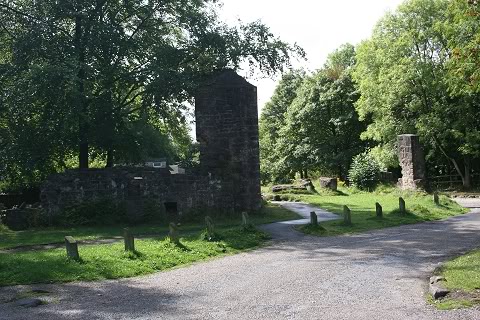
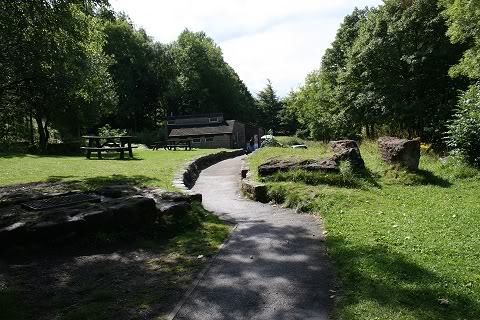
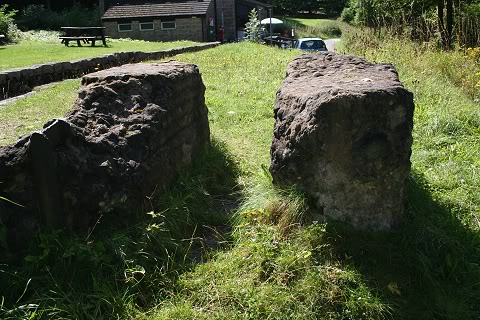
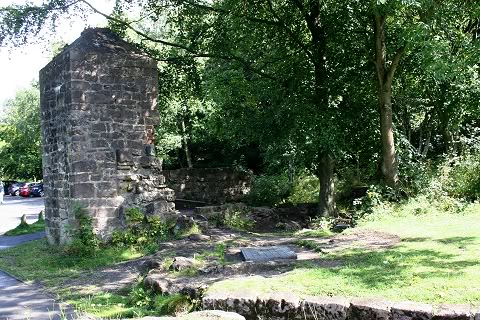
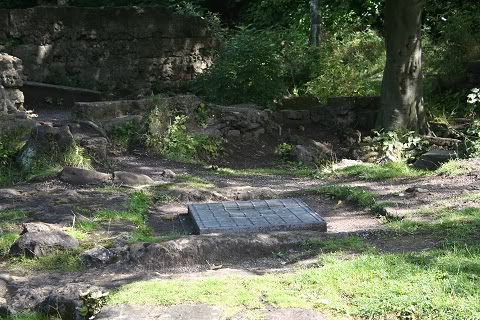
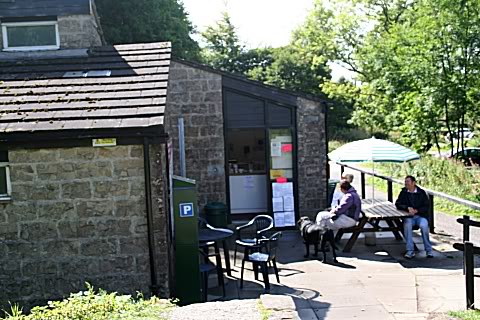
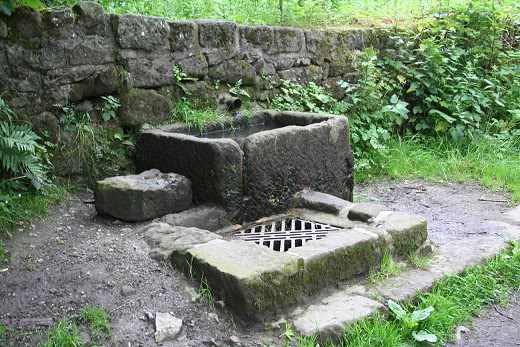
Left: Black Rocks Shop & Cafe. Right: Original Horse Trough.
==========================================
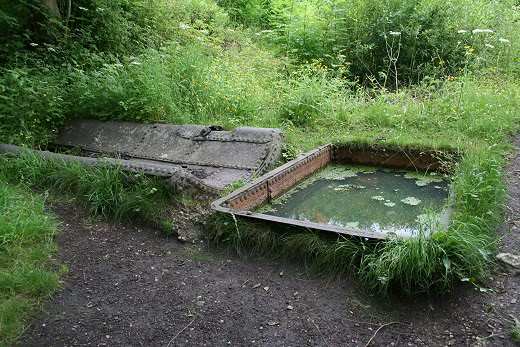
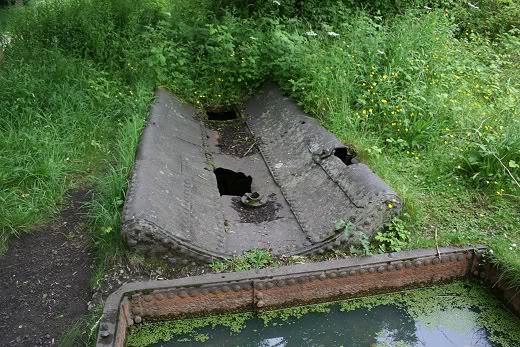
A Saddle Tank locomotive 'water' tank. The other appears to be the tank of a water tender, without the safety railing around the top. I wonder why these have been buried by the track side
and what happened to the loco's themselves!
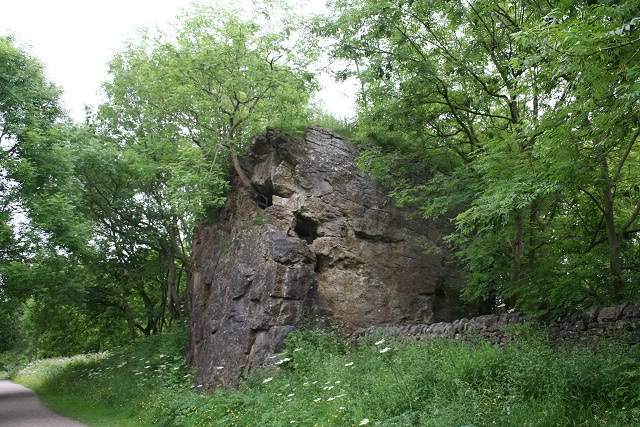
A large rock by the side of the track bed. This is the site of the proposed Junction with the Wirksworth branch.
The Incline branch was almost completed but never used. If it had been successful then there would probably not
have been any need for the C&HPR railway in the first place as it would have linked with the Midland main line at
at Duffield and trains could have traveled to the north & south from there. See new photos of this incline, below.
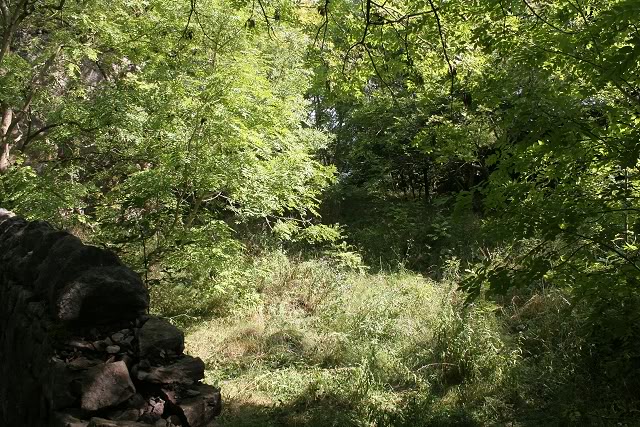
This is all that remains of the incline junction site. I could hear the whistle of the steam train at Ravenstor station just a
short way below this spot. To find this spot watch for the rocky spot, seen above, with the tree growing out of it.
(Aug 2011).
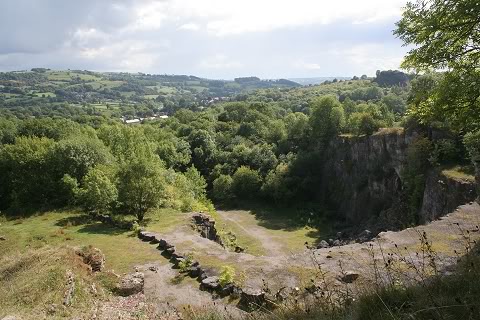
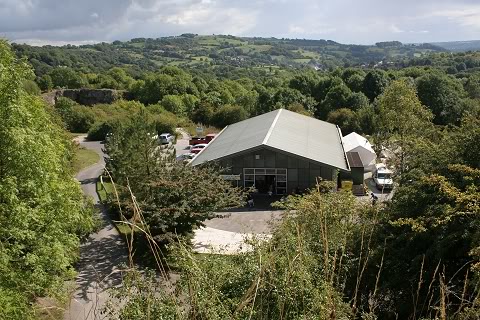
Three scenic views from the clearing around the Wirksworth Incline branch site. The building is called the Eco Discovery Center (National Stone Center) and is open
to the public. (Aug. 2011).
==============================================================
EX ROLLS ROYCE DIESEL HYDRAULIC SHUNTING LOCOMOTIVE RS8
(New photos 16th May 2016)
From my recent visit I learned that this Ex Rolls Royce loco was based at Tunstead Quarry. It was originally a steam locomotive and was converted to diesel and
there are thoughts of it possibly being fully preserved. The loco stands in what is the grounds of the National Stone Center. You can also walk down to
Raventore station and take the train into Wirksworth.
There was also a quarry here with track withing. I hae not seen this shown on any map as having actually been connected to the High Peak line.
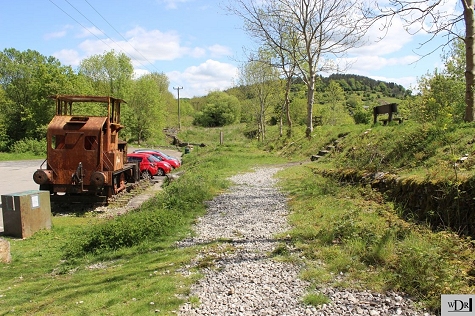
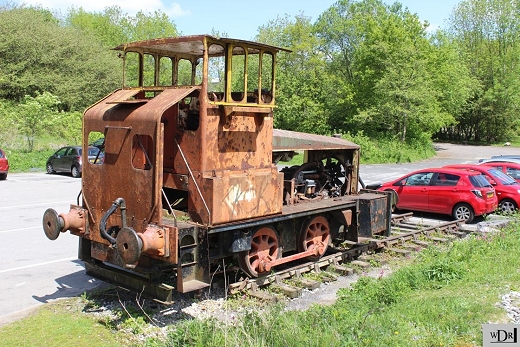
The loco stands off to he north side of the High Peak line. I also hadn't realised that there had also been a spur into a small quarry at this pint and the straight piece of ground ahead would have
been the head shunt for the quarry line. As well as the cab entrance it looks as if the shunters could stand on the platform and see ahead out of the two windows.
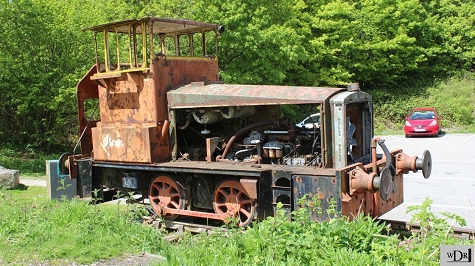
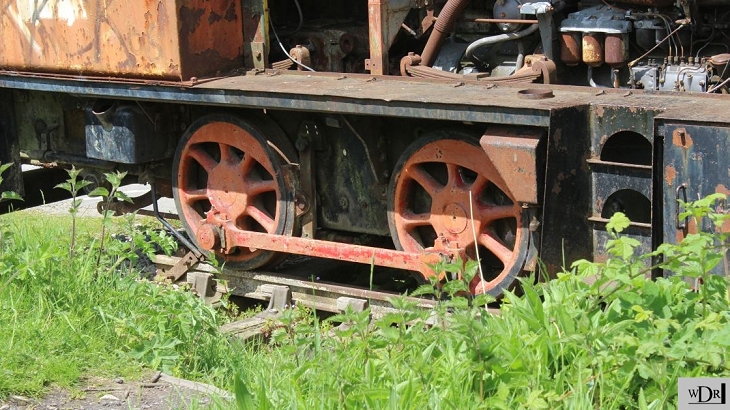
You can see it had been a steam loco from below the sole bar.
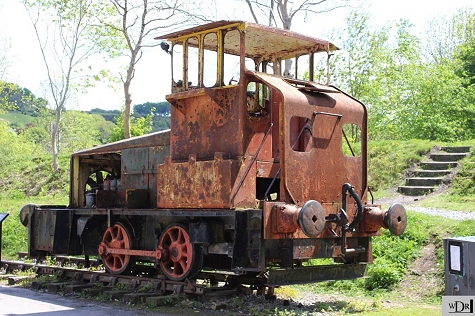
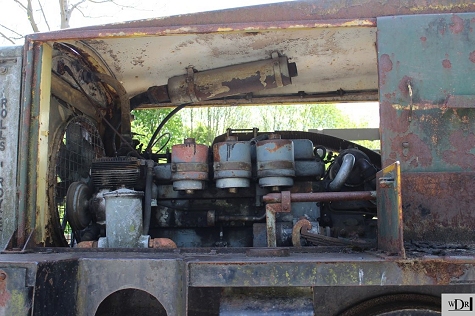
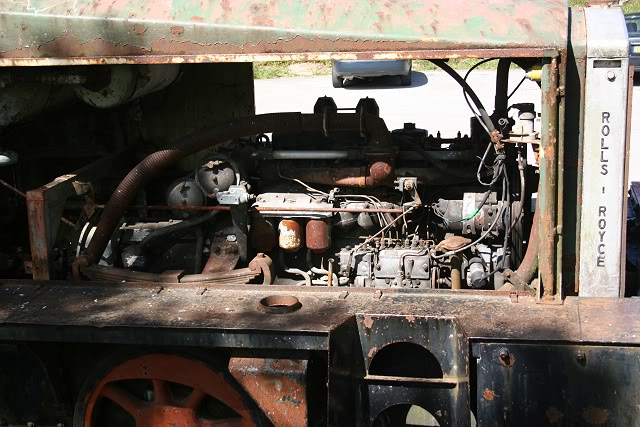
August 2011 photo
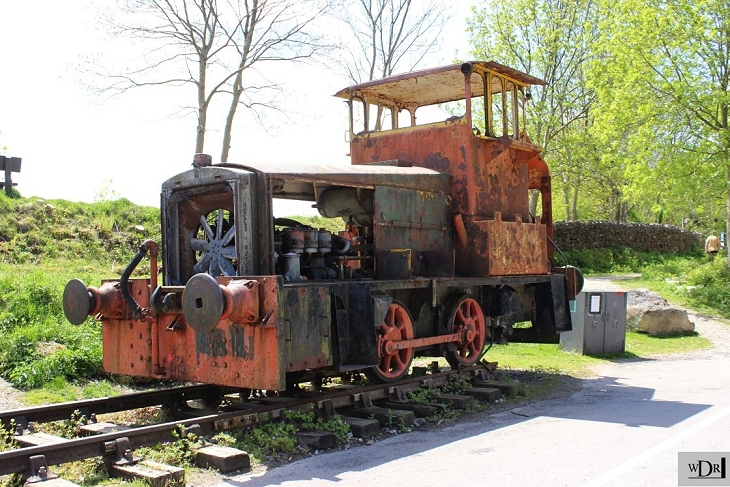
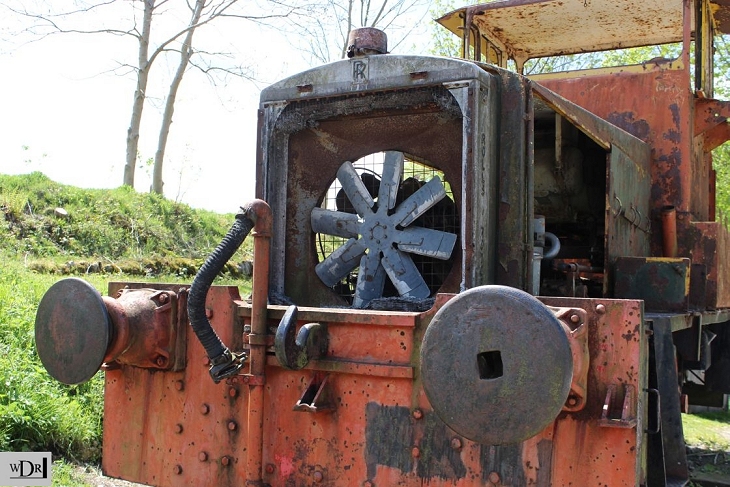
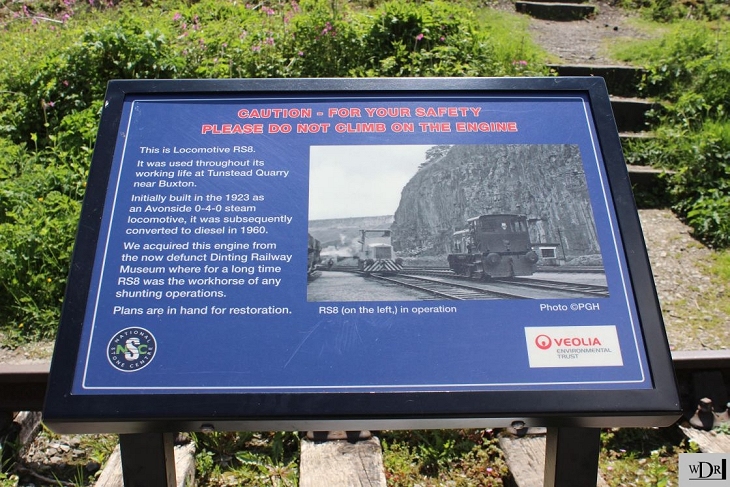
========================================================================
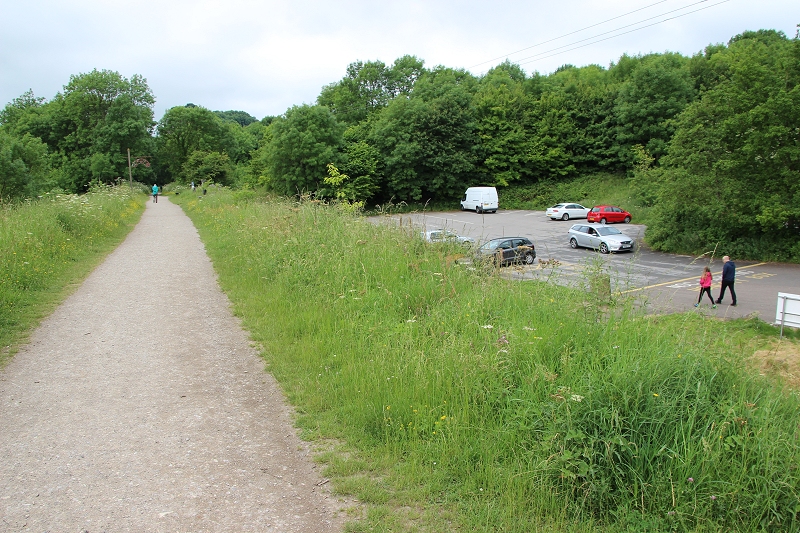
The site on the 24th June 2017. Looks rather bare without the Rolls Royce shunting loco on display, on the right.
=============================================================================================
QUARRY & SPUR (16th May 2016)
I couldn't resist having a look around the quarry and was surprised to find a number of lengths of track still laying around.
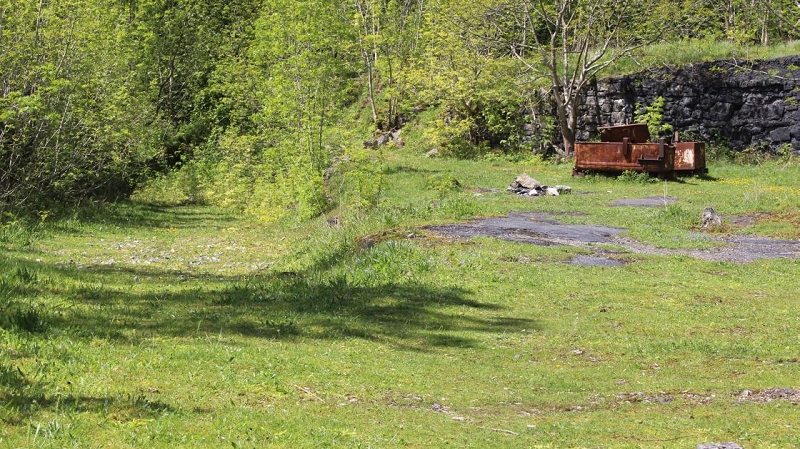
Within the quarry with the south end of the spur to the left.
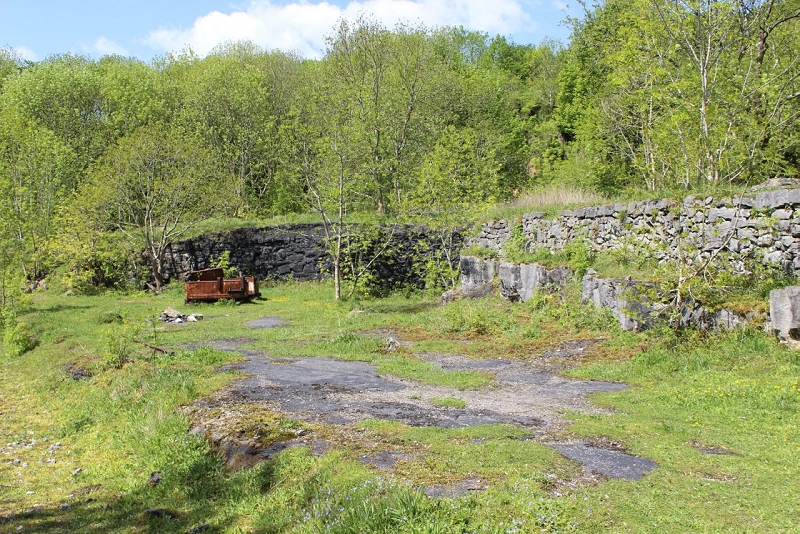
There is a dual level between the track and the quarry floor. There may have been a loading platform at this spot!
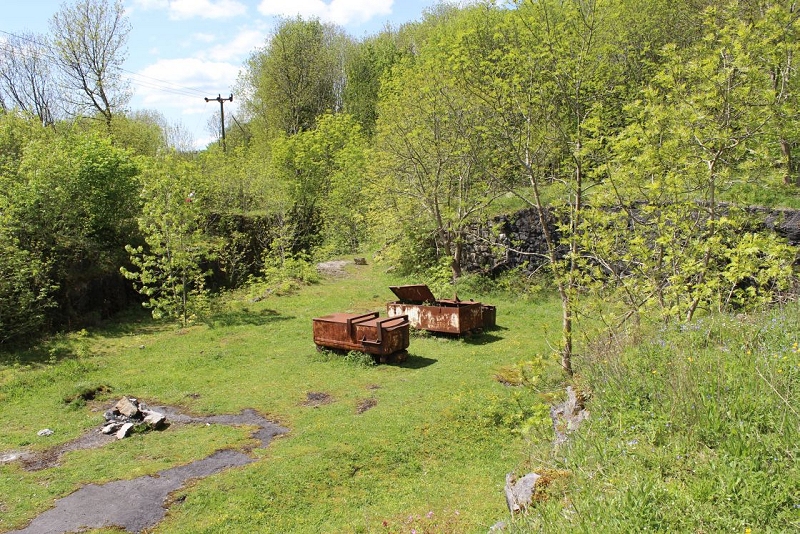
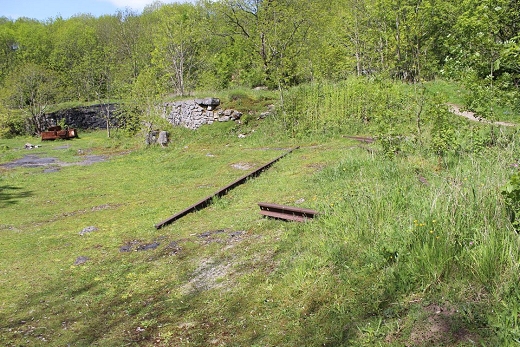
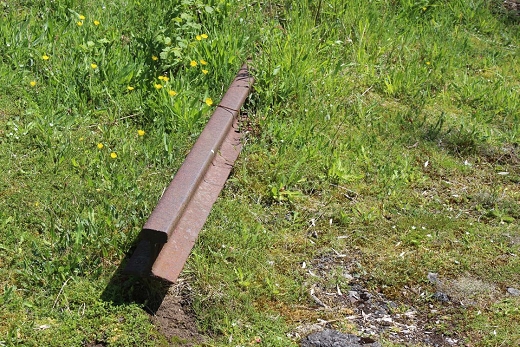
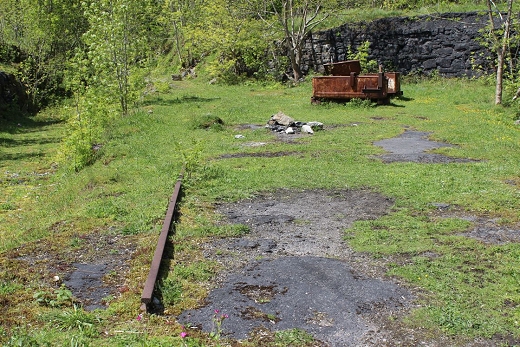
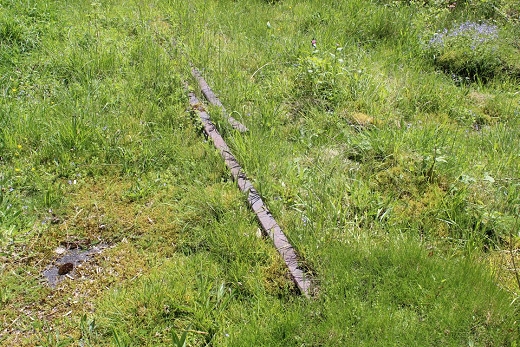
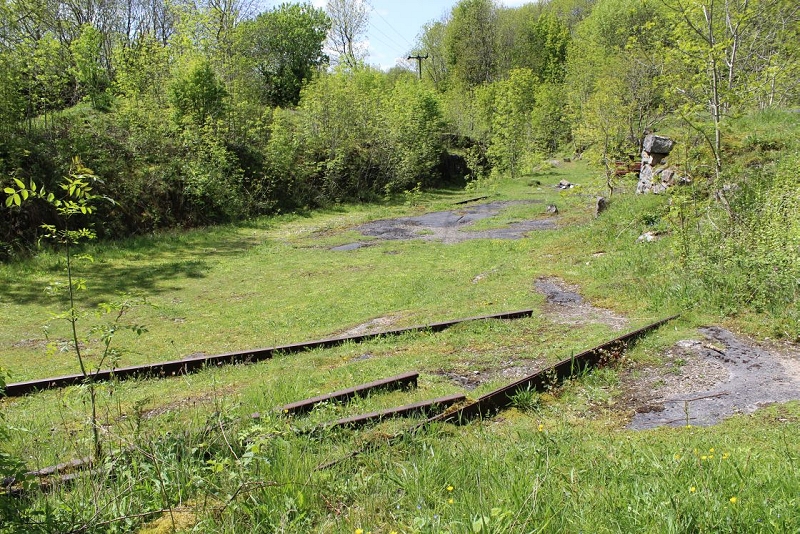
=================================================================
Remains of a Kiln. Just by the overbridge that takes you down into the Stone Centre.
(16th May 2016)
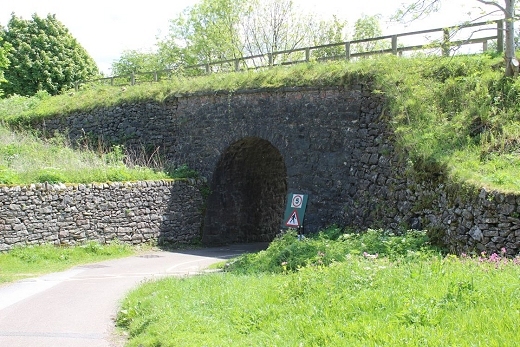

Left: The road below the High Peak Trail takes yu into the National Stone Centre. Right: The Kiln remains.
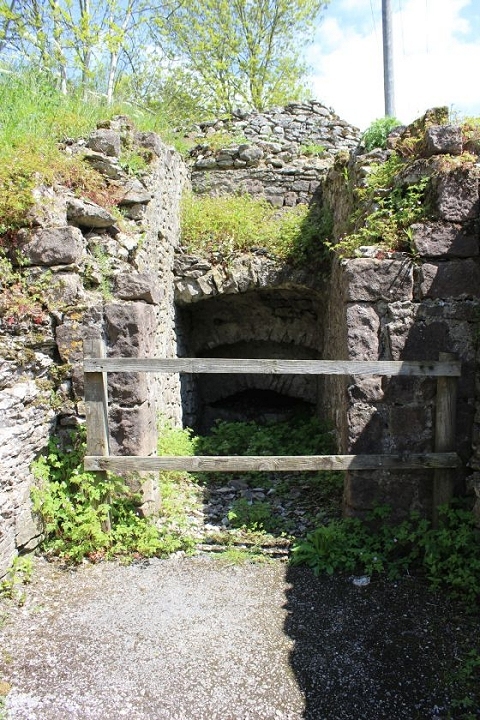
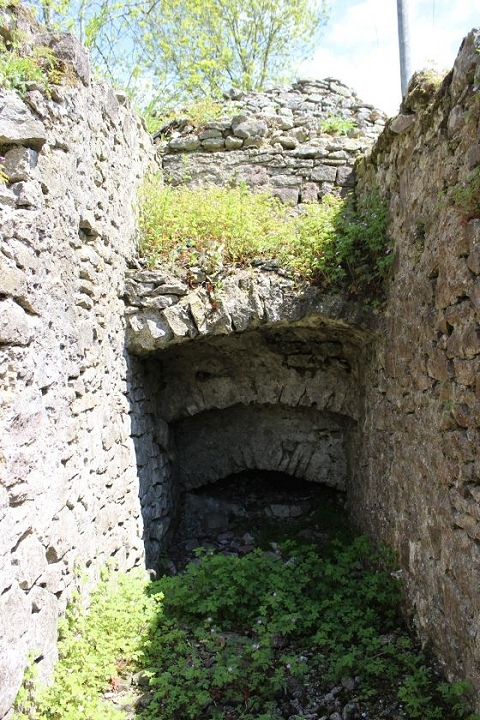
===============================================================================
Since my 2011 visit I have since visited Ravenstor during the Bank Holliday on the 26th of August 2012.
I walked the incline and visted both the National Stone Center and the Steeplehouse Narrow Guage Railway, as reported below.
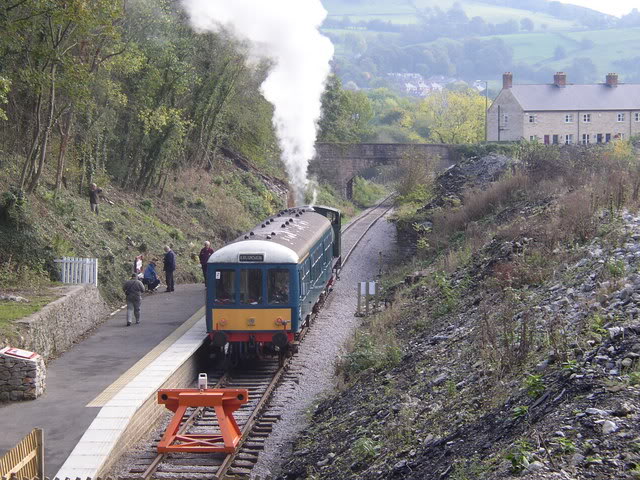
Ravenstor Railway Station (By Neil-Ferguson-Lee). (From Ecclesbourne Valley Railway web bite).
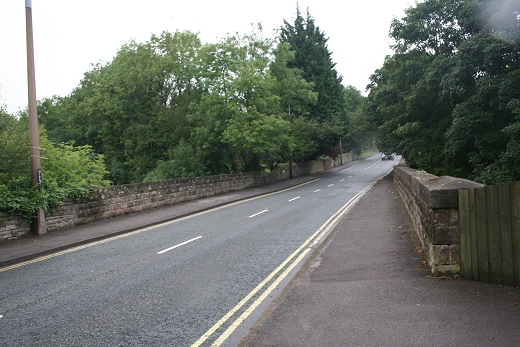
The main road over the Ravenstor Branch at Wirksworth. Towards Cromford. Between Wirksworth and Ravenstor.
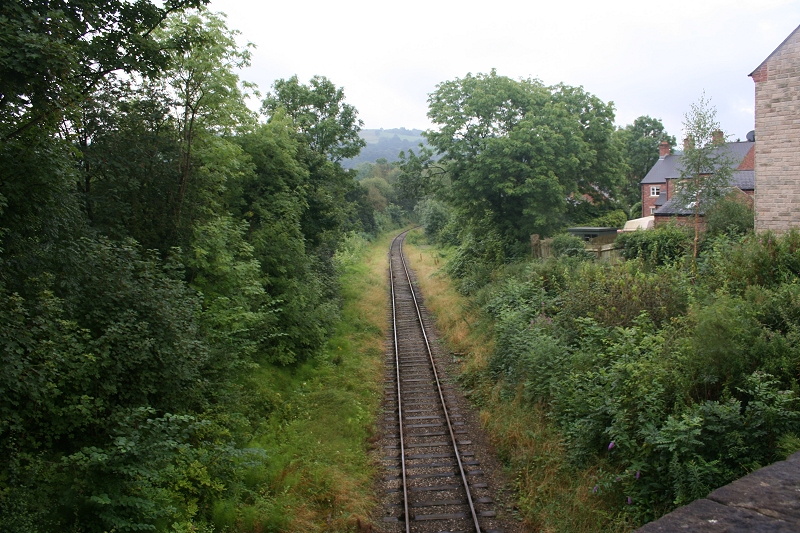
Looking south towards Wirksworth Station. The line is on a heavy gradient and is used by mainline builders to test new locomotives.
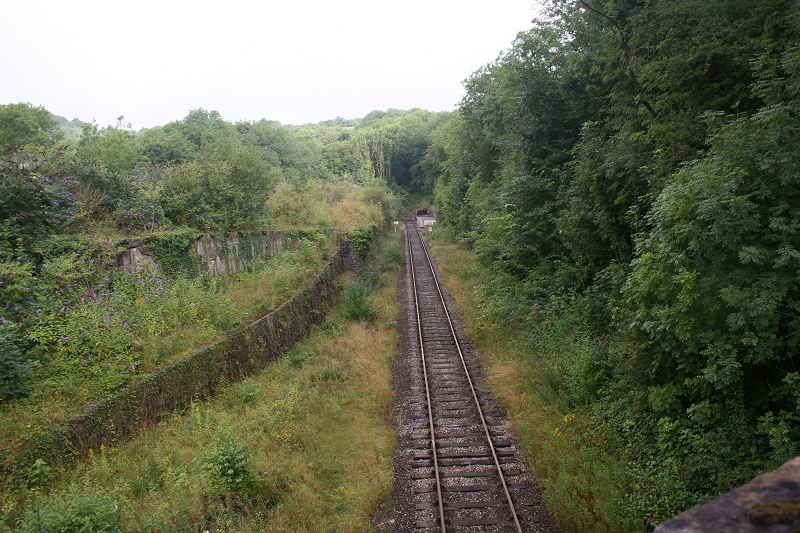
Looking north to Ravenstor Halt at Raventor Jct. and the incline that would have joined the C&HPR. Blackrocks summit is at the top, far left. Below
this bridge, going off the far left, was a junction to a quarry. The gate at the entrance is still in place just below and out of sight. Likewise, above this on
the high wall to the left you can just make out sleeper ends! This was a narrow gauge raillway that ran to a quarry further west but was replaced by
a convayer between the two places.
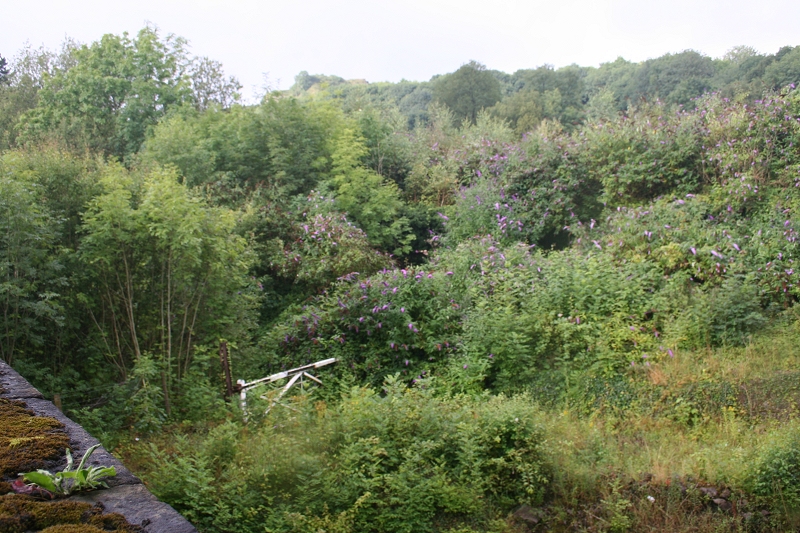
The gate protecting the quarry branch at Raventor Jct. is still in place. There was also a narrow gauge branch that went off to a quarry further
westwards but which was later replaced by a conveyor between these two places.
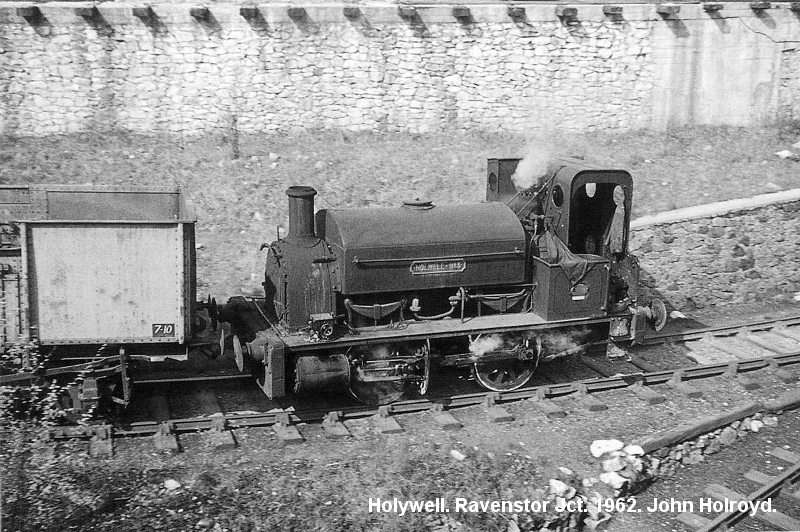
Holywell shunting at Raventor Junction. 25th June 1962. (John Holroyd).
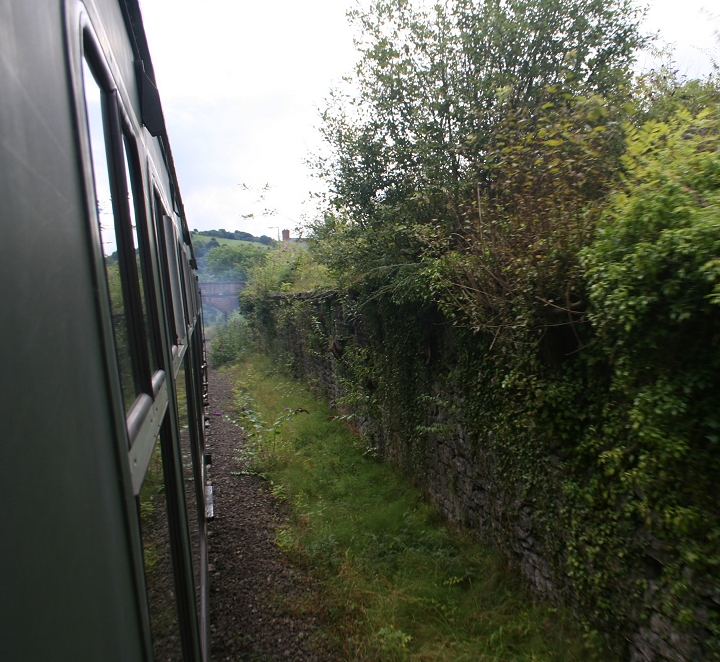
Running into Ravenstor. Looking back towards Wirksworth. There was a spur off to the left, this side of the bridge that went into a quarry.
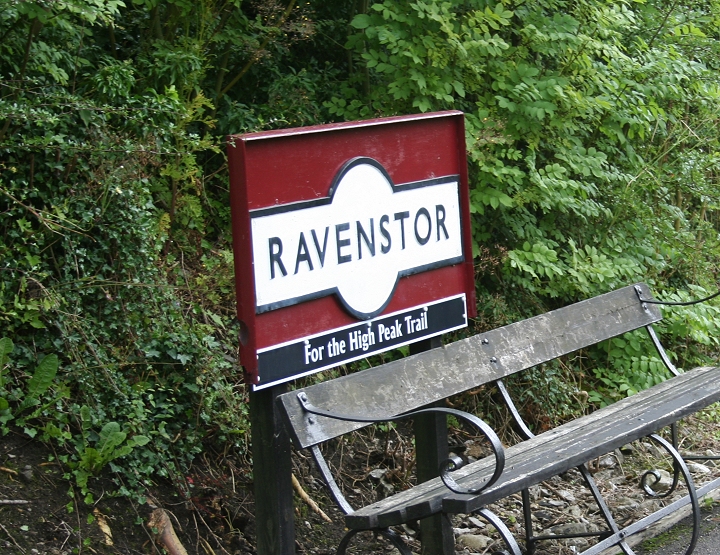
Colourful station sign and seat on the platform.
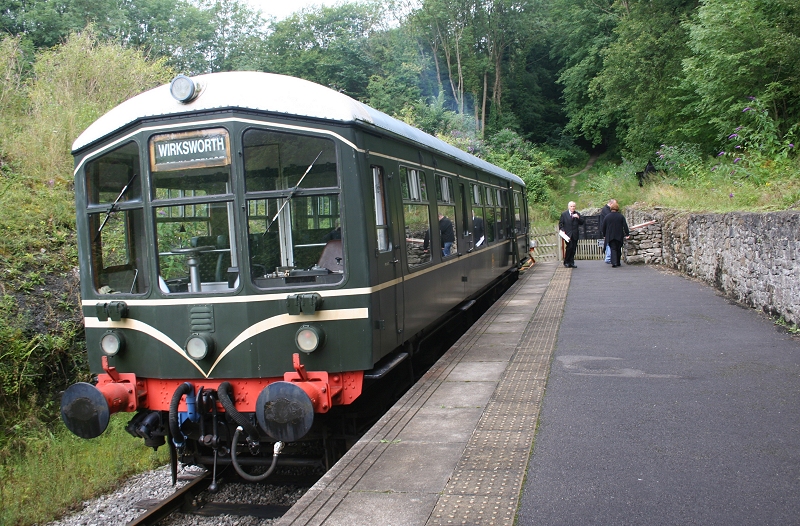
Lightweight DMU Iris' waiting to depart from Ravenstor Halt to Wicksworth. In the latter 70's I was driver on Iris when it had long aerials (Antena)
attached to the fronts and was on a technical outing testing for dead-spots on the new National Radio Network that B.R. was bringing into use.that
brought direct radio between driving cab and signal boxes.We ran between Marylebone - Aylesbury and High Wycombe-Banbury over a few days.
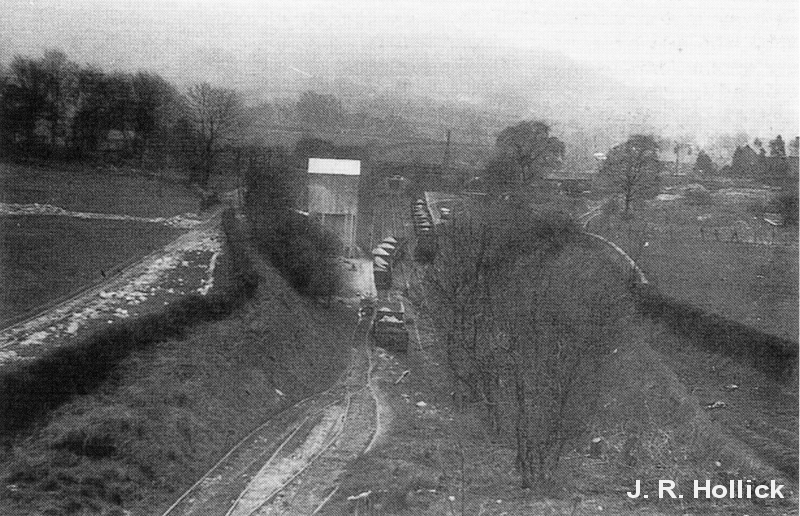
An incline railway was planned and mostly built that would have hauled wagons up to the Cromford & High peak Railway. Much was built but it
was never actually used. You can see that rails were laid and a static wagon demonstrates what it would have looked like.'
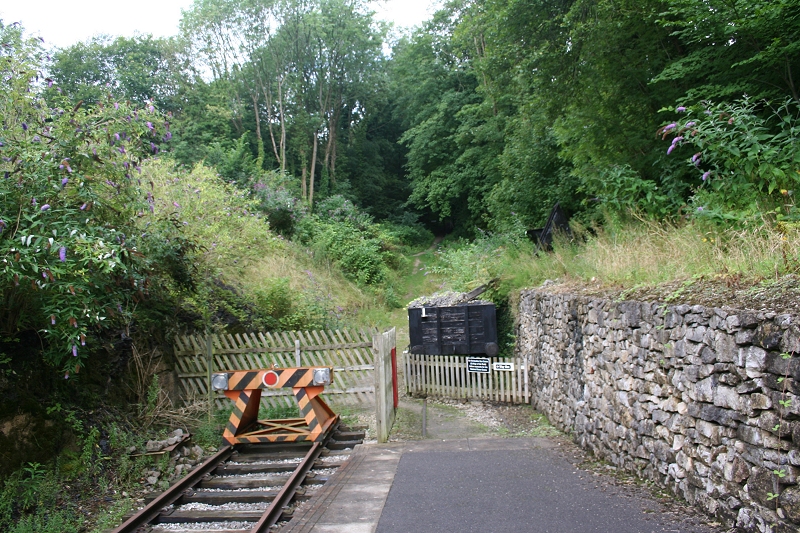
Rails are still in the ground and part way up the incline.
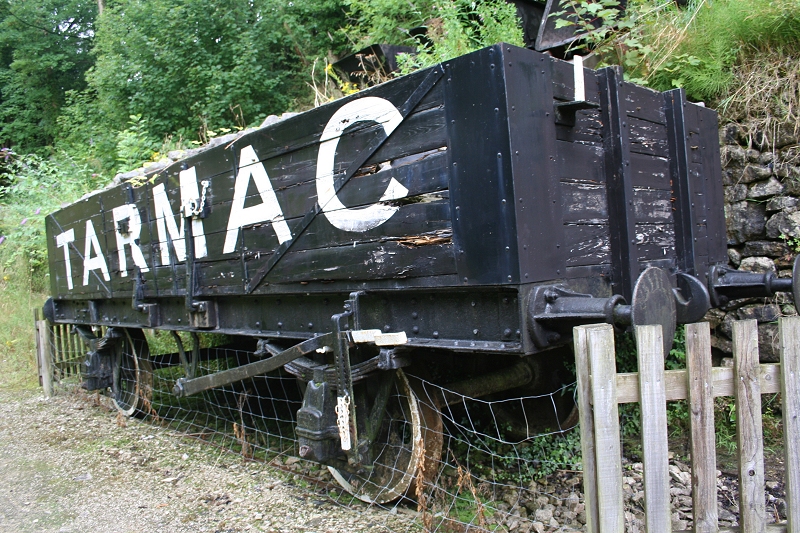
The incline. You can see two rails in the ground. They look far too wide for 'standard' guage
but I did read that there were actually three rails that allowed wagons to share one track
but could pass each other half way on the incline. Perhaps others' know better!

Ravonstor Halt looking down from the incline.
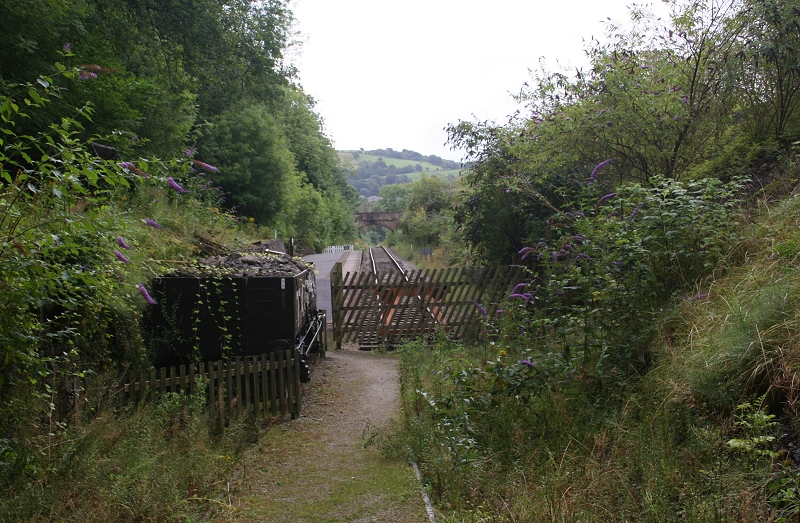
Raventor Incline 26th Aug. 1932. (J. R. Hollick).
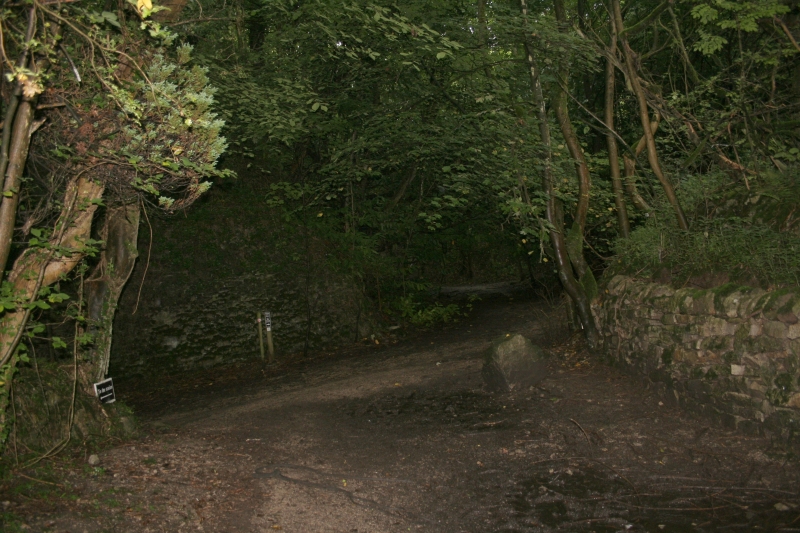
The path up to the National Stone Center is off-side to the actual railway incline. Here you see the steepness of the gradient.
It was well in the shadow and in spite of using flash I still had to brighten the image up in my graphic programme.
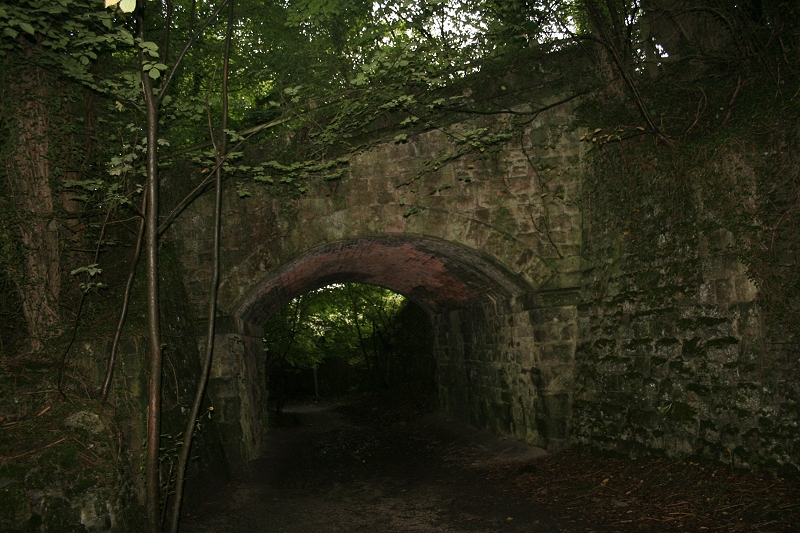
Likewise with this image. No expense appears to be spared in building the incline and this well-built bridge is proof to that.The gradient is very
obvious as the track ran on top of it. The fencing is also still in place. There are numerous buildings around the area where the path below the
bridge goes to and which could be worth exploring another time. It seems just another waist of time and money.
From here I visited the Stone Center and also the Steeplehouse Railwy. (Reported below).
Ecclesbourne Valley Railway Video (Sunday 26th August 2012
(The Ravenstor branch is included within the video)
ECCLSBOURNE VALLEY RAILWAY WEB SITE
http://www.e-v-r.com/
=================================================
Continuing from the site of the old Rolls Royce Diesel loco towards ..................
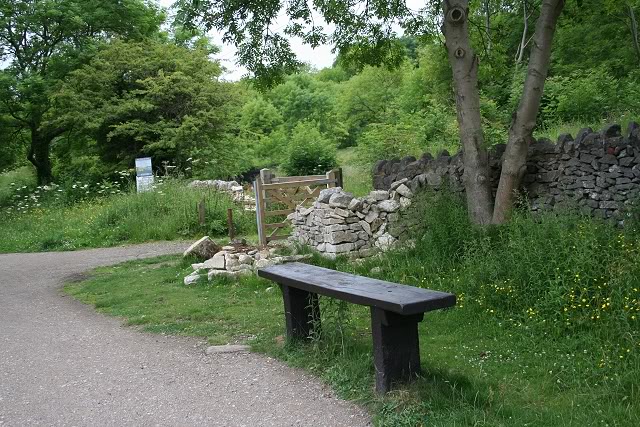
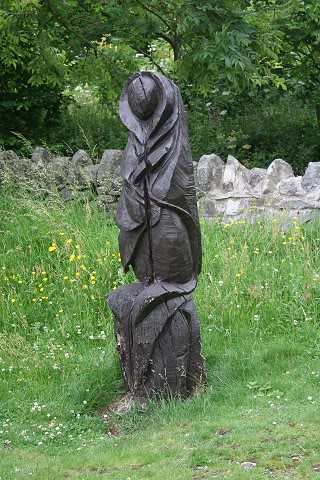
A rest spot just before Middleton Bottom, by the old diesel loco. A wooden statue alongside.
==========================================================
From Black Rocks Visitor's Center to Steeplehouse Narrow Gauge Railway...........
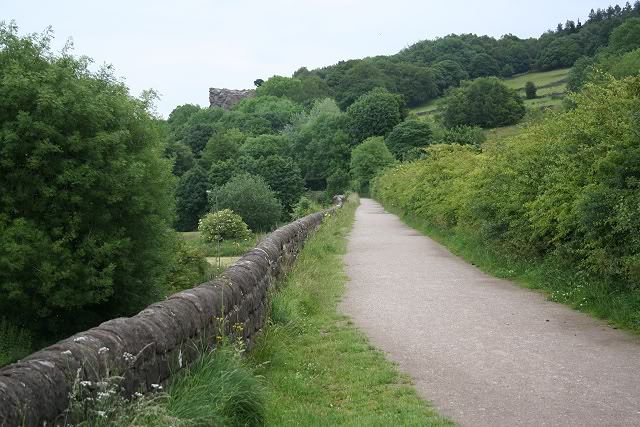
Looking back towards Sheep Pasture on the viaduct above Steeple Grange and just before arriving at Steeple House
Station. The ragged peak is of the summit of Black Rock, which is a favourite of rock climbers and walkers.
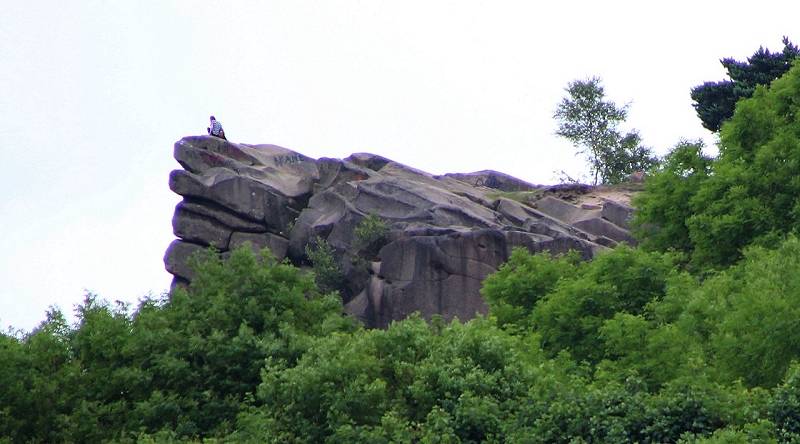
Black Rock summit rock. Cropped from a larger image taken at 200mm zoom rang from the same spot as above. 24th May 2016.

Walking towards Steeple Grange Junction. The site where I joined the C&HPR track bed on my previous visit.
(Aug 2011).
============================================
THE STEEPLEHOUSE NARROW GAUGE RAILWAY
At this point a branch ran off the C&HPR into Killer's Quarry, known today as Middleton quarry. It has since been taken over by the Steeplehouse narrow gauge railway.
The railway consists of two branches. The longer one to what was Killer's Quarry and a short branch into a small quarry. The latter is interesting in that you see a
massive pile of worked stones that have never been used and you find Fosciles in the stones. There are a number of small electric and diesel mine locomotives and
an original mine worker's passenger coach to take you along the branch.
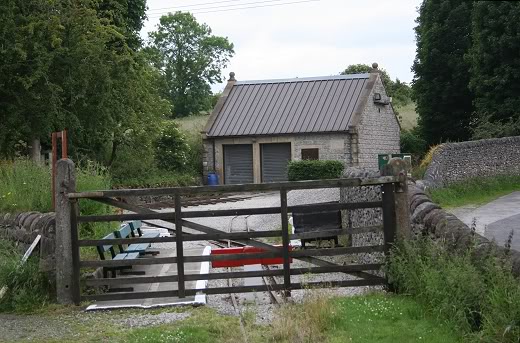
Steeplehouse Narrow Gauge Railway at Steeple Grange.. Open on Sundays and Bank Holidays and
Saturdays between July & September. The run is over the Ex Killer Quarry branch.
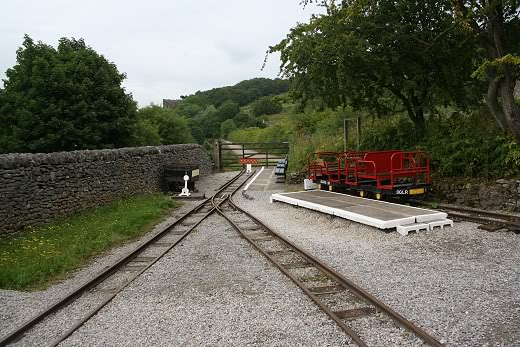
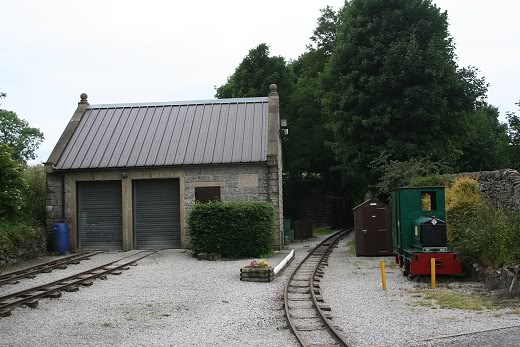
Left: The track runs towards Sheep Pasture summit. There has been mention that the line may be extended to Sheep Pasture and possibly back towards Middleton Bottom also.
Right: The loco shed with the branch running towards the old 'Killer' quarry branch. Killer was the name of the owners.
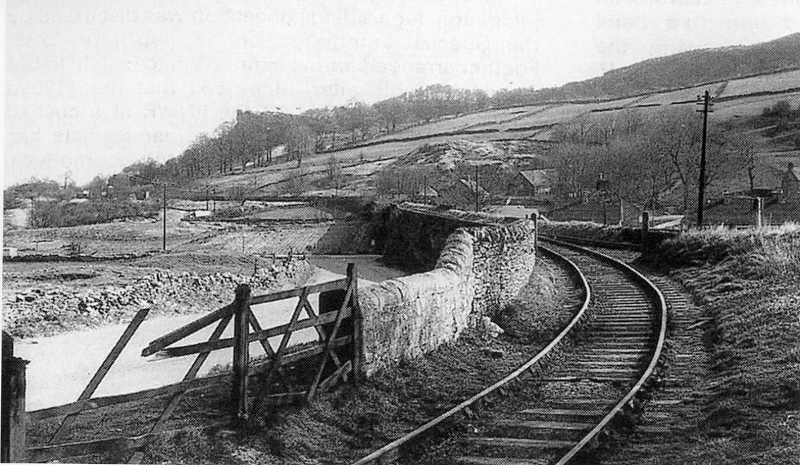
Close to the same spot as above left. Looking towards Steeplehouse Jctn., Black Rocks and Sheep Pasture to left of center. (E.R. Morten).
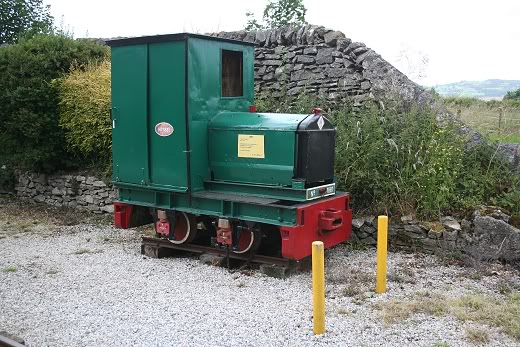

The gate are the original ones of the working quarry line at the junction with the High Peak branch. This is where I joined the railway on my second visit after getting off at the bus at the bottom of
the hill. The entrance to the site is by the road on the right.

From A visit on Saturday the 27th of August 2011
Finer weather this time and the Steeple House Railway was open and doing quite good business. They run trains on two Ex quarry spurs.
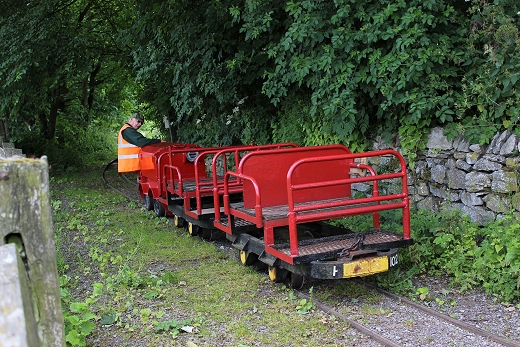
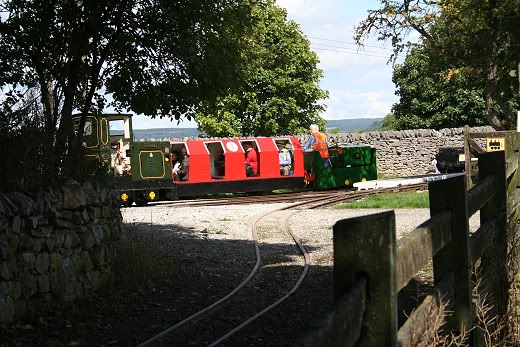
A train arrived off the Ex Killer's Quarry branch. Left: I am standing on the actual Steeplehouse junction site. Right: a train arrives from the larger quarry.
pulling right up to the stop block by a small refreshment stall.
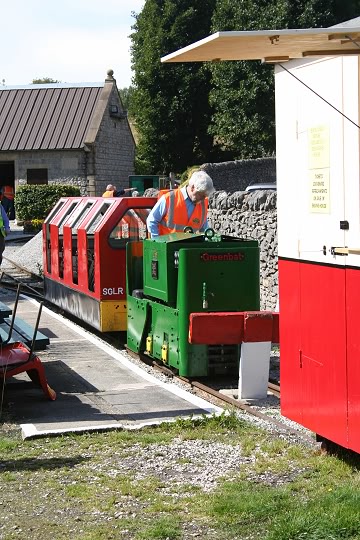
The battery operated loco and wagons are genuine Ex quarry vehicles.
Diesel mechanical loco 'Norwich' in excellent condition.
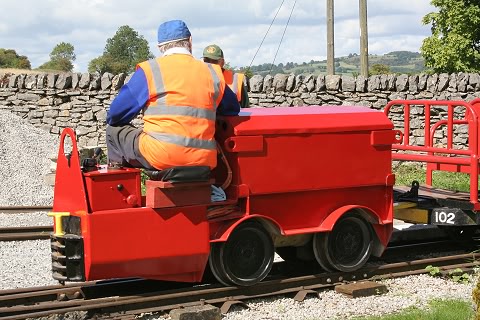
Left: The driver enjoys a short break before the next departure. Right: The engine shed also acts as the ticket office & shop.
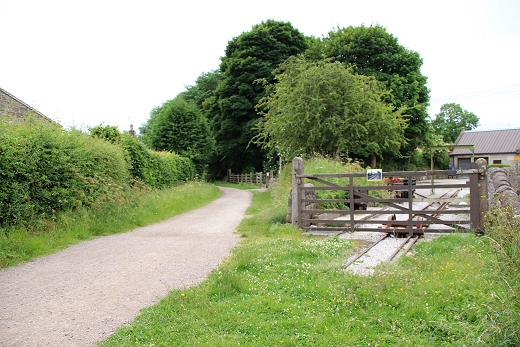
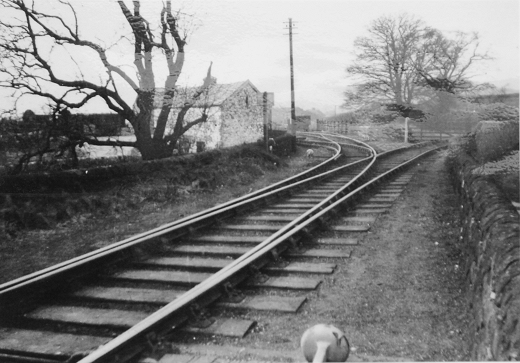
The junction for the Killer's branch, as it looks today (24th June 2017) and how it looked when the railway was running.
"New" STEEPLEHOUSE RAILWAY VISIT 24th AUGUST 2012 (Includes new video)
Steeple House Railway web site
================================================
From Steeple House to Middleton Bottom is only a few minutes walk away
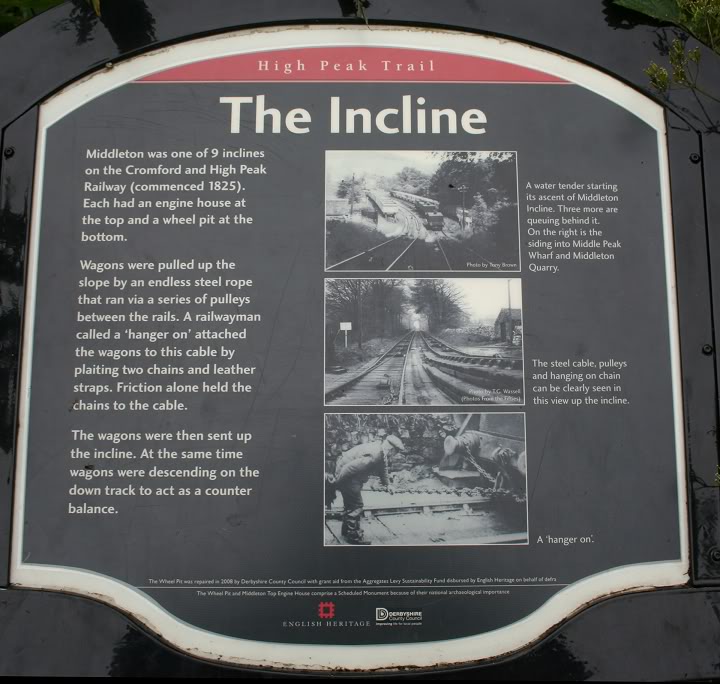
Information on Middleton Incline.
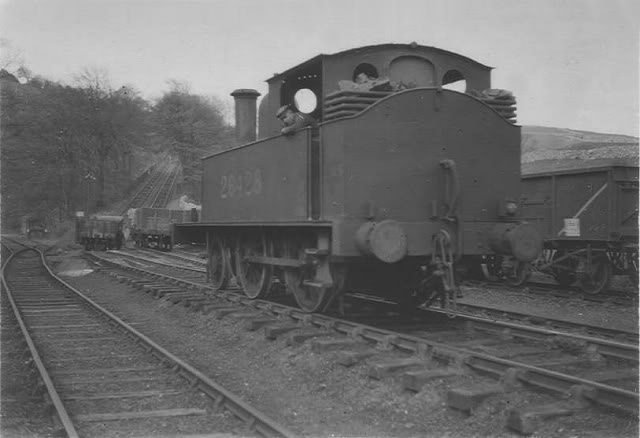
1949. Middleton Bottom with the Middleton Quarry branch going off to the left (D. J. Norton)
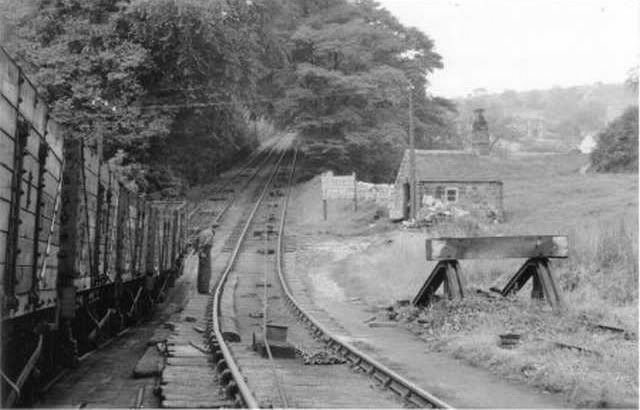
Middleton Bottom with a train waiting to be pulled up the incline. (Author Un1961. Middleton Bottom and sidings. The
wagons on the far right are standing on the branch into Middleton Quarry sidings. The stone hut is seen again on the
left. It had quite a tall chimney for it's size. Again, the railway designers have squeezed in four tracks into quite a tight
spot. D. J. Norton). known).
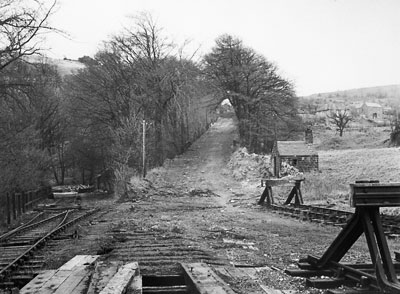
Same spot as above. Standing over the Wire Wheel Pit. The small quarry branch
has been cut off and the track is newly gone from the incline. The junction for
the branch to Middlepeak Quarry is on the far left.
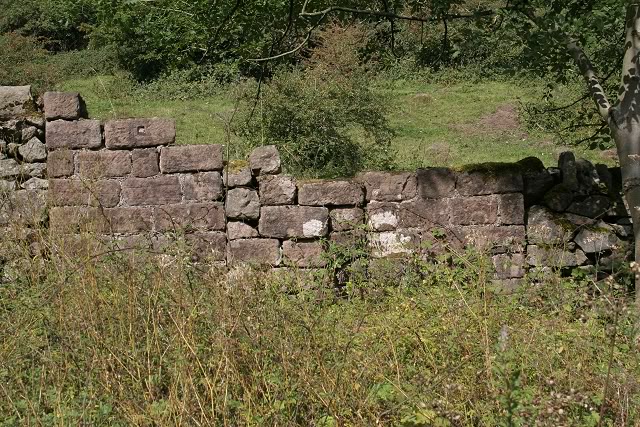
The remains of the front of the building seen above. The doorway has been filled in with stone blocks
to form a wall. The remains are now completely covered over with overgrowth today.
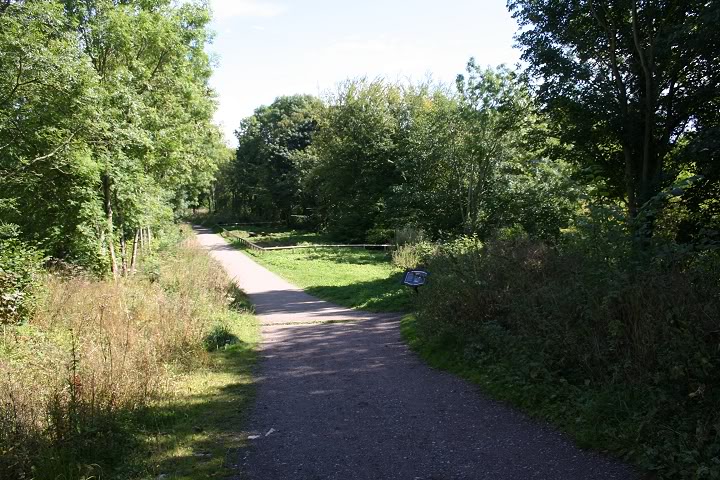
From close to the photo above. Taken from the start of the Middleton Incline looking towards the Up siding, Wheel Pit and the
quarry branch, which went off to the right.
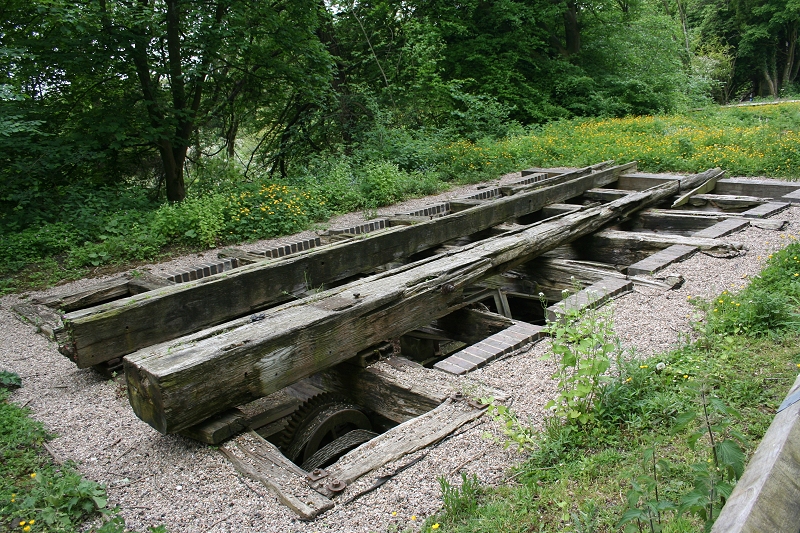
The wheel pit at Middleton Bottom. (May 2012).
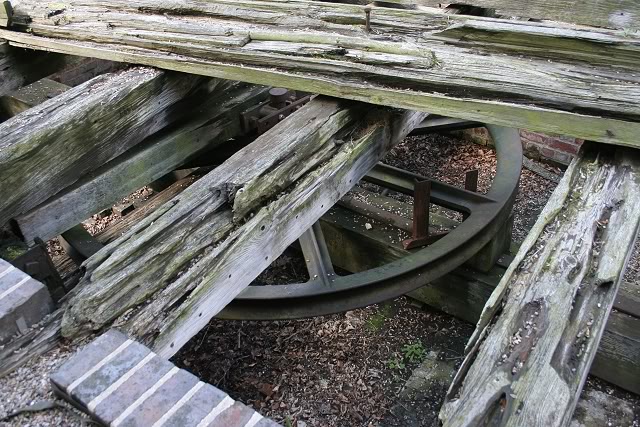
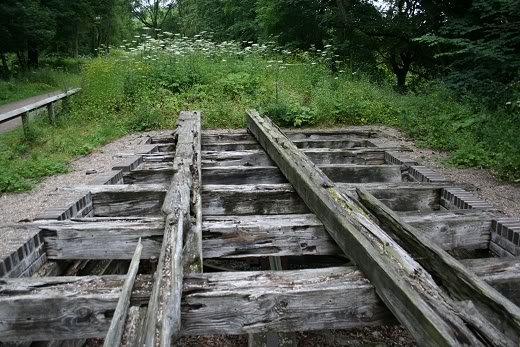

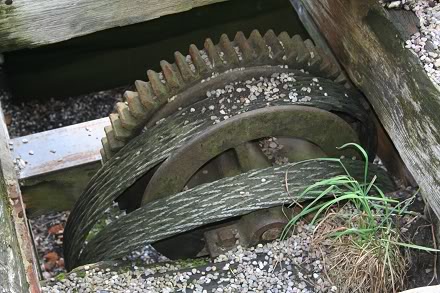
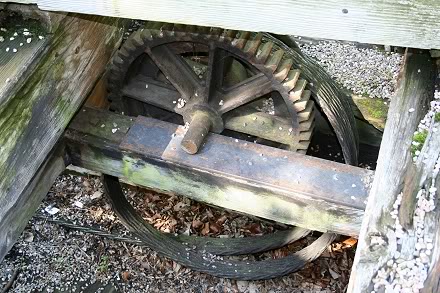
I thought that this was a braking system of some sort and I wasn't far out! It is in fact a Carriage stabilizer. It used the metal straps to keep a constant tension
between each wagon and their couplings as they progressed down the incline. (Aug. 2011).
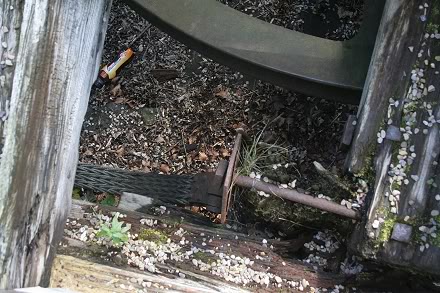
The metal strap was anchored to the side of the big wheel at the north end of the pit.
(Aug. 2011).
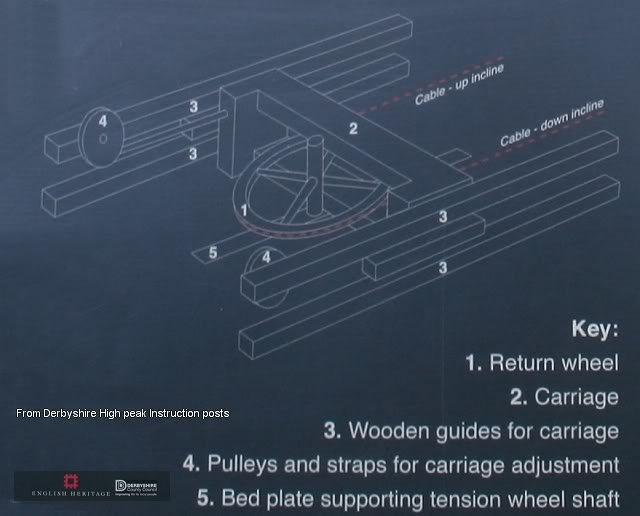
The Wheel Pit notice board.
===============================
THE SHORT QUARRY BRANCH REMAINS
(27th August 2011)
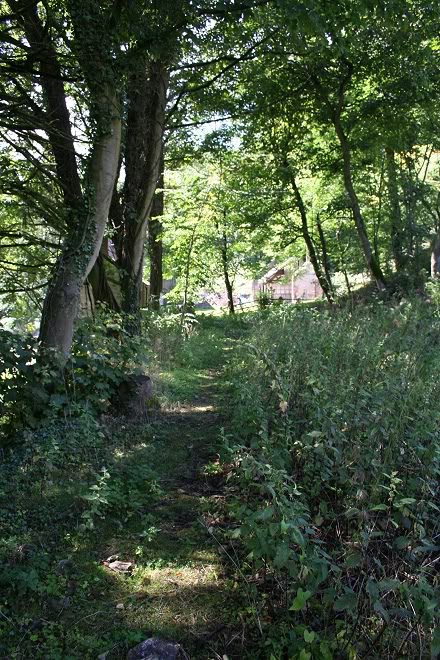
Ex branch to Middlepeak Quarry. This is looking towards the sidings.
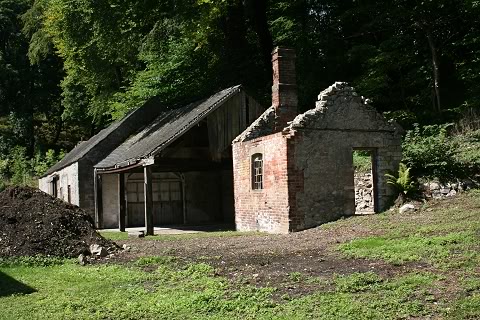
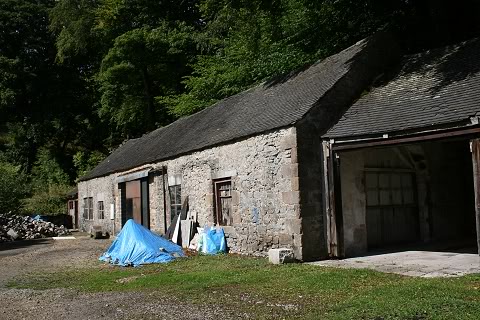
The Quarry & Sidings site and building remains. N.B. This is a private site and permission should be requested from the the owner, who is refurbishing the old house as
a modern dwelling. (27th Aug 2011).
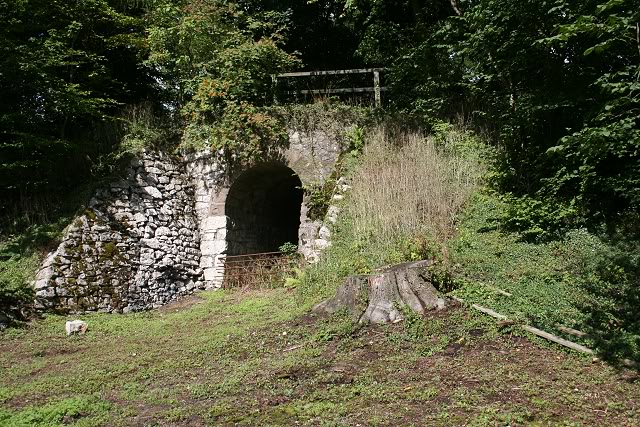
The C&HPR incline climbs over an arched bridge within the site.
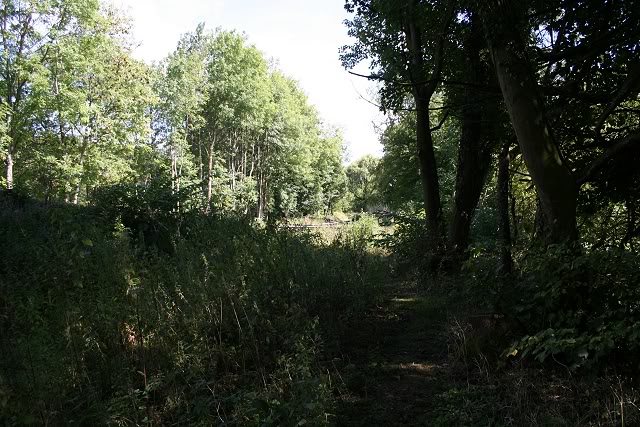
The site of the siding from the Incline over bridge (May 2012).

Looking back to the junction with the C&HPR incline is on the left, at Middleton Bottom.
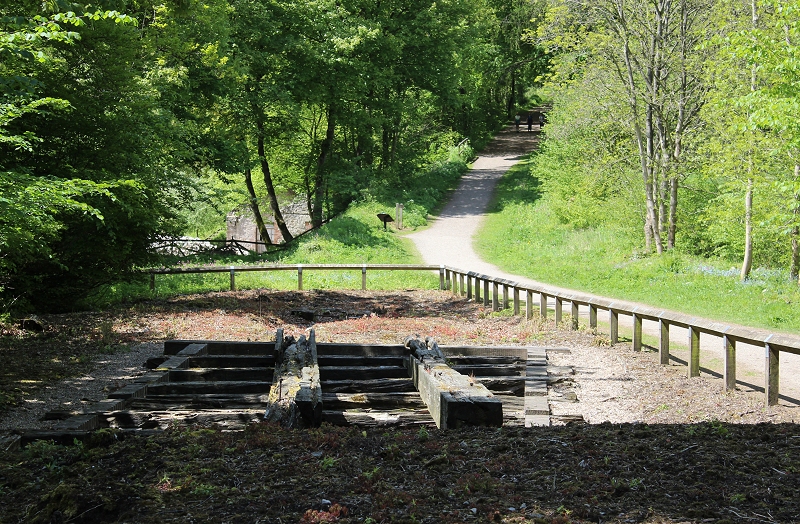
The quarry branch passed around the left side of the wire pit and into Middlepeak Quarry. The incline is to the right. (16th May 2016).
================================================
To MIDDLETON BOTTOM TOMIDDLETON TOP
My Thanks To.....
John Neave for his kind permission to use a number of his 1960's photographs when the railway was still in operation. Check out John's ''Going Loco'', which includes a C&HPR history. At....
http://goingloco.neave.com/Mark Norton for the use of 1940's photos by his late father Dennis J. D. Norton.
http://www.photobydjnorton.com/CHPR_Menu.html#LinksJohn Evens for the fantastic colour photos taken in April 1967 just prior to the line closing. John's photos can be viewed on Flickr under JodrelAviator.
Reading: "The Cromford & High Peak Railway" by John Marshall. Published by Martin Bairstow. Printed by The Amedeus Press 2011
Other Railway Walks....
The Dundee & Newtyle Railway The first passenger railway in Scotland built in 1831, which had three inclines operated by stationary steam engines. The main source of income was from
the numerous stone quarries in the area and local farming produce. Passenger numbers were always sparse.
The inclines were abandoned in the mid 1800's by new deviations that allowed through locomotive running.
The line also included the Dundee Law (Hill) tunnel built at 300ft above the City. Both the north & south portals of the tunnel are buried below modern housing schemes.
Passenger services ended in 1955 and the line closed completely in the mid 60's.
Unlike the C&HPR none of the Engine houses were preserved. The inclines can still be followed but sections have been back-filled or ploughed over
This web site tries to cover as much as possible.Boddam To Ellon Branchline Built by the GNSR in the latter part of the 20th century. The passenger service only lasted until 1934 but goods remained up to total closure in 1949.
The GNSR built a large Golf course and Hotel at Cruden Bay, with an electric tramway between the station and hotel. All that remains today is the Golf course.Other web pages....
Kittybrewster Memories. Kittybrewster Loco Depot, Aberdeen.
Tivoli Memories The Tivoli Theatre, Aberdeen.
Hosted by www.theatreorgans.com